#which fittingly transitions into a dream
Explore tagged Tumblr posts
Text
i had just, the most incredible and visual dream last night and i really dont want the imagery i experienced from it to fade. hopefully typing a written record about it will at least refresh my memory of it any time i return to it.
so, i was in a crummy motel with my aunt and grandma, i was sleeping in as it was early morning but i heard faint traces of what was on the tv. lots of people performing songs on stage. i heard a pleasantly good cover of running up that hill by a soul group called Mystery so i looked it up on my phone for later, but the search results also informed me of something very valuable: sparks were about to go on on that very same show that was airing right now. as soon as the show host announced their presence, i started cheering and whooping loudly which startled and annoyed my aunt as she thought i was still asleep but apparently i can pull myself awake for sparks lol.
and this is where dream logic comes in, because i was both still in that motel bed and also there where the show was being filmed in the audience. now, they weren't going to perform live, which i was a bit disappointed in at first, but the stage inexplicably became a gigantic triptych screen, slightly folded inward on the outer screens, think like the garden of earthly delights by bosch (fittingly). ron and russell were there to announce the debut of this special sampling of their new album and it would indeed be an hour long which i was excited about (aunt was ambivalent). they came into the audience to personally greet/thank the fans for showing up in support and i, despite being far in the back, received a handshake from both brothers, ron noting that he remembered me and apologized that "nothing is as exciting as the first time meeting i know but thanks for coming." i thought, what a classically ron thing to say!
the screens went on and a pan of the audience was shown. camera was on me for a second so i ruffled my bangs that were out of place and i heard a few friends of mine cheering for recognizing me, lol. embarrassing but funny.
an animated intro began for a new video of an extended the girl is crying in her latte. this was faithfully recreated 30s-style animation of a mop (?) falling into a river and stating the name of the song in a child's voice while a latte cup poured tears into the river. there was a further extended intro involving the chosen four from earthbound and pokey also talking about everything we were about to see and i was on the verge of messaging everyone i know about what i was seeing out of sheer disbelief. not sure how this was relevant in retrospect but i was absolutely not gonna complain
then began a really grand animated video showing cartoon girls throughout the ages going in semi-chronological order, in styles faithfully recreated and some being actual iconic animated girls, shown crying over various scenarios in fast transitions. i was immediately hit with 'oh they finally had the absolute budget and it is paying off so hard.' black and white animation became early 30s painted animation and czech and soviet stop motion and cutout animation, and at some point anime gets introduced and the video gets a lot more experimental as the animation starts warping and transforming on itself and i swear the extended version of the song also does some interesting and unique things, picking up more instruments and more of an orchestral flair as it progresses, getting a little bigger every time as the visuals become just plain hypnotic. sailor moon was also there crying about tuxedo mask and had a dedicated verse in the song, Somehow. it all just got so kaleidoscopic and every corner of the three screens had something to fix your eyes on, almost grotesque in a good way as the figures abstracted to the point you could barely tell they were girls crying. it was a really fascinating tribute to the medium of animation and the theme of cartoon girls crying throughout the ages over very different things was so fun. i wish i could remember what more of the extended lyrics were but i thought to myself, what we got with the cate blanchett video really was only a tiny sample huh - this is absolutely the way this song should be experienced.
the cheering was really thunderous even if sparks fans only comprised a pretty small amount of the show's total audience, those of us who were there were in shock and awe at everything we were seeing. in real life i actually woke up a few different times to turn off the fan, turn off my alarm, etc and was greatly relieved that the dream picked up right from where i left it each time i fell back asleep. i'm not usually lucky enough for that to happen. in the dream i got on twitter a few times to tell my friends, you should really be here, i'm scared that this is a dream because it's all too amazing it might not be real. i know a video for an extended veronica lake came on shortly after - i think ron and russell also showed up to thank everyone again inbetween. they were dressed in suits and looked very proud of their creation. and i guess that's the basic extent of what i remember.
8 notes
·
View notes
Text

Dreaming Fifteen: The 10 Best of S/mileage
The best retrospective for S/mileage is actually written by one of its former members. “The short skirt I took off before I even knew it, and the short hair that drastically changed my look / it’s now a remote past,” the group’s Ayaka Wada reminisces in her graduation single “Yume Mita Fifteen,” the lyrics penned by another former member Kanon Fukuda. A lyrical nod to the early phases of the group, these adolescent details get a look back with the same fondness from Wada as though she’s browsing through a book of her awkward baby photos: she understands these moments may have been formative for her, but thank goodness it’s all behind her now.
But Wada really did that, so hopefully the future generation won’t have to go through that. S/mileage came up during an era of desperation not only for its home company Hello! Project but also the idol industry at large. The group debuted at the dawn of an age referred in retrospect as the Idol Warring Period — Idol Sengoku Jidai — with a resurgence of idol bringing a deep saturation of groups which inspired the roughest of competition. The short skirts were part of the many attention-seeking schemes — a strategy that would definitely not fly now. The less we bring up “Dot Bikini,” it might also be for the better.
While it adds context to the not-so-proud creative choices, understanding the era that S/mileage hail from also better makes sense of the narrative that informs much of their music. The idol-group peers that find kinship with them are ones like Shiritsu Ebisu Chuugaku or Sakura Gakuin, school-girl-themed acts developed in response to AKB48. Compared to those groups, the school grounds were more implied for the music and visuals of S/mileage: the lockers and classrooms set the stage for the video of their indie debut single as they dance in uniform. But their music still centers on the life of a teenage girl, one who’s ready to find out what love really means.
For better or worse, the adolescent point of view defined S/mileage from their peers in Hello! Project the most. The company’s flagship group Morning Musume had been lamenting their own teen-girl woes in what in retrospect would be known as their Platinum era yet they weren’t nearly as obsessed about going on dates as S/mileage had in a song like “Asu Wa Date Nanoni, Imasugu Koe Ga Kikitai.” As the Colorful era dawned for the former and their topics transitioned into more grand philosophies about self-improvement, the latter stayed grounded in their everyday spaces while navigating their own in-between of youth and adulthood.
My choice for S/mileage’s number-one is fittingly their major-label debut as it introduces the themes, narrative and the age bracket that would inform the songs thereafter. The B-sides and minor singles would expand the school-centered world introduced by “Yume Miru Fifteen”; “Onaji Jikyuu De Hataraku Tomodachi No Bijin Mama” is one of the best that precisely add to their teen-girl universe. Their later minor-key ballads deal with the push and pull of being no longer a 15-year-old girl but not yet a woman. Their latter years had them trying to convince the world they’re no longer young nor innocent, and so it was inevitable they’d shed the name and become Angerme, where talks of age and experience were set aside for reinforcing values and attitudes. With their legacy so steeped in adolescence, it’s only fitting, then, that the group’s best retrospective places their best song in the past tense.
Here's my top 10 songs by S/mileage.
"Yume Miru Fifteen" (2010)
"Samuine." (2012)
"Mystery Night!!" (2014)
"Sukichan" (2009)
"Amanojaku" (2009)
"Watashi, Choito Kawaii Urabancho" (2012)
"Sukiyo, Junjo Hankoki" (2012)
"Otona No Tochuu" (2013)
"Uchoten Love" (2011)
"Eighteen Emotion" (2014)
3 notes
·
View notes
Photo
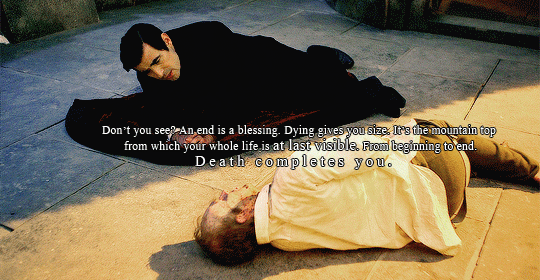

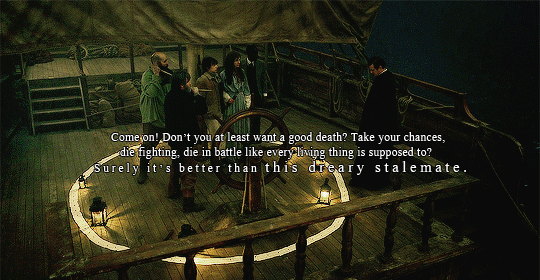
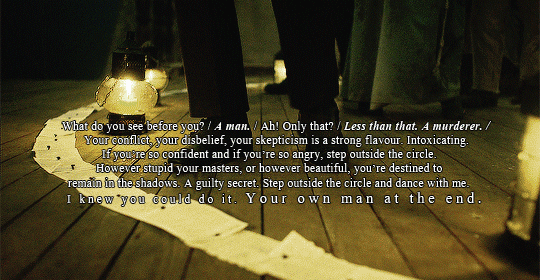

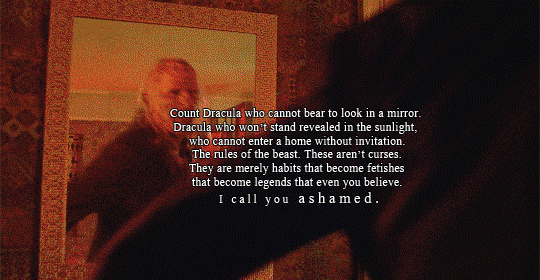
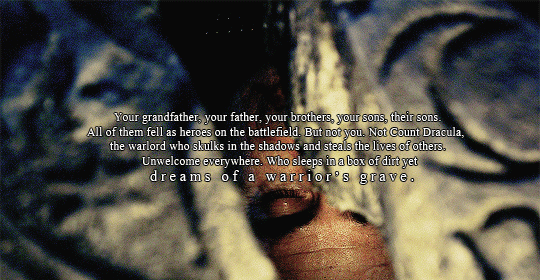
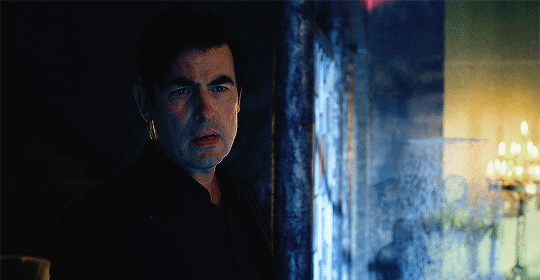
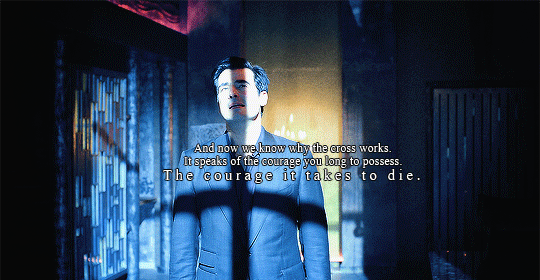

“I want something to eat, a bit of company. || I do sometimes wonder what it is that you actually want.”
The way Claes plays Dracula throughout -- including as an old man -- is that immense power is done as presumption. And the presumption come across as, “I don’t have to take you seriously. I can swat you like a fly anytime I like but for now, you‘re amusing me so let’s just carry on chatting.” And then at a certain point he doesn’t care anymore and just goes, “F**k it.” He’s just not bothering [with pretenses] anymore. That flippancy becomes menacing and sadistic. It’s a demonstration that he really doesn’t regard anybody as a threat. That’s quite difficult to deal with. And if he’s gonna kill you, he’d quite like to have a nice chat with you first. And when that’s done, he’ll snap your neck.
Dracula likes the Duchess. We had to cut it for time but there was a lovely bit where he says he couldn’t bear the idea of her going to England and living on benefits or some such. He didn’t like that idea, he was offended by it. It is sort of sentimental but it doesn’t mean he is kind. He is sentimental in the sense that, as we find out, he has met her before when she was 18 and he killed her mother. And then he finds her again and gives her a good death -- he joins those two things up. To him, in a way, it’s like “Oh, I remember that, it was last week.” but in the intervening time she’s aged 70 years. But he takes her for one last dance. She wouldn’t necessarily agree that’s a good death but in his point of view, there are all these little mayflies around him clinging to their pointless lives far past their value: “What difference does it make if I kill you today or tomorrow. You die anyway.” He has genuine affection and appreciation for all her memories and the life she’s led. So he enjoys her company and then drinks her blood.
At some level, he feels condemned to life but he does attempt to entertain himself all the time and he’s capable of valuing entertainment. For instance, he never just jumps Agatha. At any point. He never does. He could just grab her but he’d rather have a chat first. He seizes any moment of stimulation and interest and excitement. But there are some sort of Groundhog Day things going on. Early stages we talked about, just as a sort of backstory, that maybe Dracula spent a century being good just to see what it’s like. Maybe – because he talks to Harker about it – he tried suicide but it doesn’t work. Maybe he absolutely reached the end thinking, “I can’t do this anymore.” but “oh God, I can’t die.” And then you make the decision to go on but then that must be fueled by something different: “I need more of me.” And then it becomes an obsession, it becomes a mission, and over centuries you forget where you came from. And so you forget that actually the sunlight is fine. It all becomes an armour of shame.
Dracula is obsessed with survival. Lucy is nihilistic. That’s a flavor he’s never really tasted before and he sort of envies the ability to be okay with death, which he isn’t. He certainly finds that flavor seductive but he wasn’t necessarily working out why. It’s Zoe/Agatha -- “Zagatha” as we call her -- who figures out the connection that binds all this together: he knows he is a warlord who’s afraid to die. And that means he is trying to hide from himself. He lives like a scuttling rat. He wouldn’t stand in the sunlight. He wouldn’t look himself in the mirror. He wants to be invited in, he does not wish to be despised. All those dreadful things he’s built around himself that aren’t even true -- they are just in him. These rules and habits become fetishes. He’s forgotten himself and what [the rules are] all about. And in a way, we tried to give this a solution.
Fear of the cross was such a technical one. Dracula knows he is debasing himself to avoid death and there is the symbol of “die for your beliefs” and he can’t. He finds it hard to look at. He watched his own sons die in battle and he couldn’t. It’s a very powerful idea, what that might do to you. This mighty man, this amazing warlord defeated the Turk and did all these amazing things but he got this curse, this contagion, and the only thing he couldn’t do was to die a proper death. He just talks the talk. This is Agatha’s revelation while she is dying herself. He wants to have the courage to die. “Zagatha” says, “You want to defeat death but the only way to defeat death is to face it without fear.” Now that’s unfortunate. The only way to defeat death is to actually die. And that’s what he does at the end. He gets his act together, he goes into battle and he dies.
We were very happy with that as an ending. Dracula is a very hard character to kill but he certainly found a resolution, let’s put it that way. It felt very moving when he was lying across “Zagatha” on the table, drinking her blood. There was a sort of full-stop-ness to “You didn’t think I’d let it hurt, did you?” It was such an iron process of not revealing that that story is happening. I think everyone who watches goes, “Hang on. Those two. Those two, there is something weird there.” But it’s not acknowledged, really, until the very end. And indeed when he says it, “After all this time, did you think I’d let it hurt?”, you know. Of course he wouldn’t. So it’s rather sweet. I like it. He finally does actually bend a little. Claes does a lovely delivery on the line “You’re in pain.” And she says, “I’m equal to it.” But she doesn’t notice that what he says is, “You’re in pain.” He’s aware of somebody else’s pain for the first time as a bad idea. And being aware of somebody else’s pain is surely the gateway drug to morality. It’s not morality itself but it’s just the beginning of “somebody else suffering? I don’t like it. At least I don’t like that person suffering.” We liked that. We are sentimental. Love can redeem anyone.
--- Dracula commentary by Mark Gatiss & Steven Moffat [x] [x] [x]
#bbc dracula#long post#claes bang#dolly wells#mark gatiss#steven moffat#dracula x agatha#mine#okay but i love this? internalized shame & crippling self-hatred splintering into various myths over centuries#w/ dracula being their most steadfast believer#hiding in plain sight#punishing himself to the point of devolving into an amoral predator that can keep going regardless of what it takes to sustain itself#and how it's threaded through all 3 parts#briefly reflected in his conversations w/ others#and culminating in that final confrontation#breaking the 'dreary stalemate' of wanting to part but being afraid to take the leap#where agatha reminds him of his beginnings to usher in the end#which fittingly transitions into a dream#a dream he shares w/ her#'at last visible. from beginning to end'#*full chef's kiss*
157 notes
·
View notes
Text






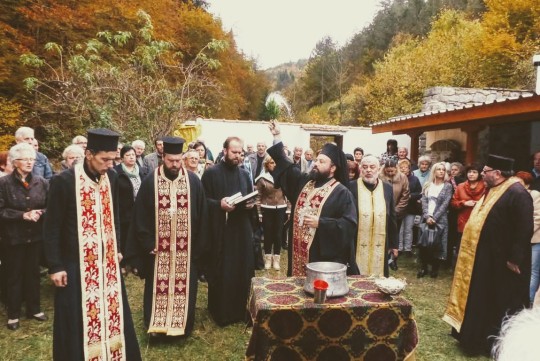

October 14th is Petkovden (Петковден), or the feast day of St. Paraskeva of the Balkans, also known as St. Petka. She is an 11th century Christian Orthodox saint and ascetic, originally hailing from the town of Epivates in modern Turkey. After being called forth by God, she gave away her possessions to the poor and lived out most of her life in the desert. Legend goes, that after she died and was buried, an old sinner who had drowned at sea was buried next to her. Paraskeva protested this by appearing in a dream to a local monk and informing him of her grave's location; when her body was unearthed it was found to be incorrupt (not decomposed.) During the following centuries, her relics would travel around the Balkans, eventually being transferred to Iași, Moldavia, where they remain to this day.
Paraskeva is traditionally one of the most highly venerated saints in Bulgaria. Between 1238 and 1393, when her relics were in Veliko Tŭrnovo, she gained the moniker "Saint Petka of Bulgaria" (Света Петка Българска) and the reputation of a protector of the Bulgarian people, and she is still revered as such today. Notably, Bulgarian tsars, such as Ivan Alexander (1331-1371) would swear oaths in her name.
On the folk side of things, Petkovden is an important agrarian holiday with ancient roots. It marks the end of the autumn harvest and sowing, and the beginning of livestock mating season, which is why it's also associated with shepherds and farm animals. Fittingly, after Petkovden begins likewise the planning of engagements and weddings. On the day itself the village would organize a feast; an animal, usually white, will be ritually slaughtered in the churchyard, a kurban would be prepared and blessed by a priest, after which everyone would celebrate by eating, drinking, singing and dancing. The holiday would function as a sgleda, in other words an opportunity for young people to meet and get acquainted, while being chaperoned by older relatives.
Petkovden is naturally the name day of anyone named Paraskeva, Petko, Petka, or any of their derivatives. Due to her connection to Friday (per her name), St. Petka is also regarded as a patron of women, children and the hearth. Infertile women will sometimes spend the night in a place dedicated to St. Petka, such as the rock chapel near Trŭn (pictured above), in the hopes that she will help them conceive. On the days between Petkovden and Dimitrovden (Oct. 26) there is a traditional ban on feminine activities involving wool – spinning, cutting, sewing – as it is believed that anyone wearing clothes made during this period will be attacked by wolves, or fall ill, die and turn into a vampire. To anyone who doesn't honor this restriction, it is said St. Petka will appear in the form of a snake.
The aforementioned time period (14.10-26.10) is the transition between fall and winter, the latter thought to kick off on Dimitrovden. Thematically, this makes it a liminal period between life and death (not unlike Friday, which signifies the end of the work week and beginning of a period of rest), ergo these restrictions exist as a safeguard against the unknown and chaotic powers, in full swing during this time. This is also why St. Petka is seen as a mediator between the two worlds, pictured in folk legends as dwelling among the dead, and alongside Archangel Michael, judging the souls who wish to be granted entry into Heaven. On Petkovden, individual families will traditionally hold smaller, private celebrations, called semeĭna sluzhba, in honor of their stopanin – a deceased relative/ancestor, seen as a protector of the household. A ritual loaf of bread would be baked and blessed with frankincense, then placed on the table onto a clean shirt, next to a small bowl of salt and a glass of wine. Every family member will proceed to take three bows before it, after which the eldest present will raise the loaf above their head and say a blessing for health and good fortune. In some regions, a special Petkovdenska Zadushnica is also held in remembrance of the dead. Petkovden is, thus, inextricably linked to rituals like Kokosha Cherkva, which similarly involve ritual sacrifice and seek to appease powers beyond human comprehension.
Petkovden, like many other Bulgarian holidays, represents a layering of Christian traditions and older, pagan beliefs and practices. It has resulted in a saint who is simultaneously a patron of Life and Death (or perhaps more accurately, what lies inbetween?), a personification of fertility and new beginnings and an usherer in of winter and darkness; a day equal parts merry and somber.
#bulgaria#slavic#eastern europe#orthodoxy#autumn#balkan#customs#petkovden#im really bummed out i couldn't write this in time for the holiday#but there you go bulgarian halloween#mythology
519 notes
·
View notes
Text
Midnights Random Thoughts
Can’t sleep so I’m going to stream of consciousness my way through midnights real quick. sorry for any typos/confusing thoughts/unfinished thoughts, it’s 1 am here
Lavender Haze: such a grower. Probably the song that has grown the most on me. Love the use of the word melancholia in here. Also the way she shouts “get it off my desk!!!!!” The verses are beautifully real-life, capturing her sadness, her racing thoughts, her gratitude for love, her resentment of the world with such clarity. And the chorus, fittingly, has this haze to it! It’s not a permanent solution, a haze is inherently impermanent, which is also why it’s not a song in which to try to read her thoughts on marriage because the song isn’t about that so much as perception and gossip and frustration, but you can’t blame her for just wanting to stay wrapped up in it. It feels like a very middle of the night song too.
Maroon: this song is so ……. Good. Makes me cry. “And I chose you the one you were dancing with.” “I looked up at the sky and it was maroon.” There’s a simplicity to each moment seen in the rearview that captures the original feeling perfectly—the awe, the gratitude, the love. She sounds so YOUNG in memory. The girl in the song isn’t 32 year old Taylor except of course that she is and her hindsight is framing it all but I just mean —young 20 year old Taylor is so present. As I said on first listen it reminds me of paper rings in that the song is a rush of images but they’re all red instead of blue and so about forever stolen/transformed. Someone pointed out the other day that maroon is such a depressing color, what red fades to with time. I love that and also it’s a deeper, richer color. It is almost the version of Red (song, album) she couldn’t write until now. But brilliantly condensed.
Anti-hero: the best part of the song is the number of syllables. I’m joking but no, really. I love how many syllables it has. It’s so purposefully clever and catchy but never loses its heart for all that. Also it transitions between its very different melodic sections in the verses really beautifully and cleanly. It feels all over the place emotionally because it IS but it is held together very solidly in terms of pop structure and so it’s such a sturdy song! Which is something Taylor loves to do with a song about her inner doubt. There’s something so right about that because doubt has its own iron certainty. I love all the angles of her insecurity—social, physical, internal—but the thing that just ties it all together for me is the “I wake up screaming from dreaming one day I’ll watch as you’re leaving” recurring piece in both verses because it just goes all the way down to her heart and exposes it for the listener. This is why she’s allowed to complain about no one wanting to be friends with her as a little kid forever. Because it left such a mark!! And part of her is still so afraid and will always expect to be left. It kills me. A perfect song, deserves to be the monster hit it is. Sexy baby is a great and funny lyric.
Snow on the beach: Love this song, both clean and explicit. It’s just another way of Taylor saying that love is real and it happens sometimes and it’s not just something we make up when we’re 9. I’ve said it before but the real person tiredness of the song is my favorite part, the weariness that suddenly wonders at the surprising beauty. The central metaphor is so wonderful and the second verse is so funny and surprising and specific. She said “google images is something that can be so personal” and she’s so RIGHT and never ceases to amaze me. also it makes me ache.
You’re On Your Own, Kid: like just …. The wisest song. And you can feel every one of her eras pass before your eyes so clearly. The bridge, the resolution makes me cry but makes me feel okay again too because it’s the most earned thing she’s ever written. The song is simply the expression of the wisdom that comes with accepting a hard truth about life—the hardest thing to do! “There’s just one who could make me stay all my days” is one of the most Taylor lines she’s ever written. Because it’s true. (This is not the guy in midnight rain because he couldn’t lol. But the thing is this guy could have. We’re all glad he didn’t because he sounds like a douche but he COULD HAVE. She captured that. She captured her hunger for success, for approval, for belonging, for fulfillment as she has never captured it before. This whole song has the same weight as Taylor saying she didn’t have anyone right after she won her Grammy for 1989 except for her mom. Like it didn’t LOOK true but when she says it you know it’s true. Like it’s actually true. No one has ever plumbed the depths of fame with more matter-of-fact honesty than Taylor. Which is why she CAN be famous and be okay. Anyone who understands it that well will be okay. (Selena, Demi etc. pls go live on a farm; fame is not for you.)
Midnight Rain: I love the peppermint candy line so much. I also love the bridge. Sometimes we DoO get just what we wanted and sometimes we get a little haunted. Such an interesting tension between such true sides of Taylor—her ambition and her desire for love. Though the problem is also quite frankly that the guy was not interesting enough for Taylor and she knows that too. But her understanding of the fact that she could have stayed and that girl COULD have been her—why wouldn’t that haunt someone so obsessed with stability. I also love the “all of me changed like midnight rain.” I mean, yes. YES. It’s basically just the line in fifteen about realizing bigger dreams of mine but flipped on its head and blown up into a song. Also I love the way it does feel so far back. She’s looking through a time portal; this is not the intensity of the memories of Maroon. It’s just wistful and wondering. For a moment, for a minute. It’s a much smaller emotion than people think. But that’s the real life midnight of it all.
Question …?: This is my second biggest grower! love the way the verses and pre-chorus and chorus and bridge all fit together like little blocks. It’s my favorite song from a construction point of view. Like it’s so funny and good and conversational not only in its lyrics (“it’s just a question” is so good and my favorite line from it) but in the way it’s built. There’s this internal sigh almost that’s built INTO the song that feels like such a truthful kind of reminiscing. It’s one-sided and so inherently incomplete—can I ask you a question—but she packs so much into it. “It was. One drink. After another!” Like. The way she talks about it is simply a) the way life unfolds with so much stuff in a row, b) the way we TALK about life afterwards! It’s really brilliant.
Vigilante Shit: in the best way everything I needed to know about this song I knew on first listen! It’s her instantly accessible, very iconic fun jam that she puts on every album. (London Boy is this for Lover.) it reveals all its secrets on the first listen but isn’t less fun for that. That’s what I love about this song the most. It’s FUN and it’s clever.
Bejeweled: this song is such a banger. A bop. It slaps. It goes so hard. It’s also just so …………. Profound and Good. She’s so tired and fed up! She’s sad! Don’t put her in the basement!!!!!!!!! When she wants the penthouse of your heart!!!!!!!!!!!!!!!!!!!!!!!!!!!!!!!!!!!!!!!!! You can feel her tiredness you can feel her her POWER. I have nothing to say about this song it’s simply too good. She IS the diamond!!!!!
Labyrinth: I love how sparse this is. the simplicity of the lyrics that she does give us here, only a handful, hit so powerfully because a) they’re woven together in these very disparate melodic pieces that perfectly express in fragments the feeling of being caught in something more powerful than you, and b) because she CAN be so wordy and she is choosing not to be right now. “oh no I’m falling in love again” really does say it ALL.
Karma: I think the funniest best part of this song for me (I’ve said so much about it already) is the way she talks to the people who have bad karma. I really can’t explain it or sum it up or even put my finger on it in my own mind but it’s some combination of a call out and matter-of-fact kindness that ISN’t condescending. Even though “aren’t you envious that for you it’s NOT sweet like ho-ney” has the hilarious cadence of the funniest most condescending person of all time. It’s one of those Taylor attributes I’m convinced everyone gets wrong—the way she talks to people she thinks are wrong. There is something so clear-eyed about it, it’s almost loving. She said “you’re terrified to look down” and it’s like “shit they probably ARE” and somehow their humanity becomes clearer and clearer. Idk, idk. I know it’s probably just me but the older I get and the more I listen to a taylor callout song I just hear the love and the truth. And Karma is so true and so it makes it loving and it makes it not mean. Karma SHOULD track you down, you’d be better for it!!!!!! Idk. It’s a perfect song. The little love note to Joe is adorable. The breeze in her hair on the weekend is a perfect visual. Insanely infectious. “Don’t you know the cash ain’t the only price, it’s coming back around” is simply a call for redemption. It’s perfect.
Sweet Nothing: i would die for this song. It’s so profound. Love in an apocalyptic age. A true reminder of the things that matter. The melody kills me. Her delivery kills me. She is simply so restrained and that is the secret forever to her most powerful love songs. It’s so transformative, it’s everything. I have Nothing to say it’s just SO good.
Mastermind: the fact that it’s a LOVE SONG and it ends with HIS SMILE/WIDE SMIRK is so perfect it makes my heart ACHE. Like it’s kind of the thing I was talking about with Karma where so many people don’t understand Taylor and get her wrong because so many of her fans are so annoying (all love to swifties but so many are insane and deranged and making stupid unrelated little points all the time) but her critics are usually even more wrong and one of the things they just CAN’t get is her heart. And it isn’t separated from her intense and highly specific brain—her long memories, her childhood scars she won’t ever fully leave behind, her obsession with planning and being orderly but her love is what lights it all up from the inside. You kind of can’t understand Taylor without loving her, you just can’t. It won’t click, you won’t see it. And this song —-the magic of it is that it’s about being SEEN maybe for the first time. And so the song unwinds and unspools from that moment at the end when he smiles at her and when he KNOWS. From her knowing that he knows. Like somehow the song draws her audience into the feeling of her being loved and seen and known and the feeling of release that gives her. Release not just to be happy and safe but to spill all her secrets! And open all the windows of her funny, planning, organized little mind and say “I’m a mastermind” and he’s like “yeah you are it’s very cute” and it just let herself exist in the space where she’s loved. And that’s where she’s SO free. And that’s where she’s her truest self.
And now that I think about it, that’s one of the main threads through midnights is the being known and I might cry now.
38 notes
·
View notes
Text
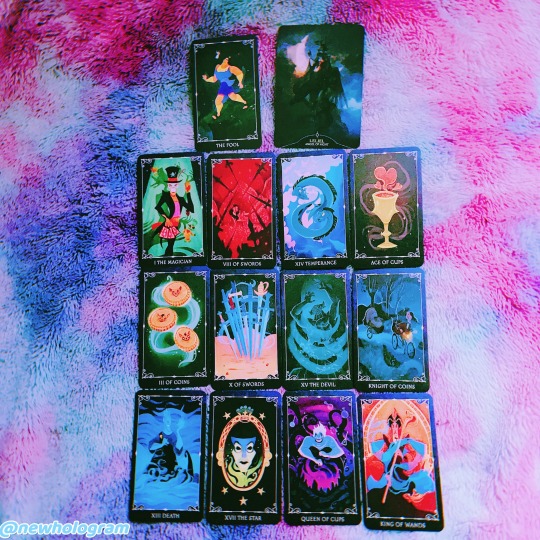



2023 Overview Hologram Tarot
Year 4… It feels completely wrong to say. The unreality of time is undeniable now. How did last year change you? Take what you learned and use it because our overarching energy for this year is The Fool, representing new beginnings and limitless potential. Kronk is enthusiastic about this new journey, with his head held high. But he's also easily distracted and can become confused by the little devil and angel on his shoulder. Should you feel overwhelmed by conflicting inner dialogues, just take a moment to gather yourself before proceeding. Double-check that your shoelaces are tied before you take that leap.
January-April: We start with the Magician, which is fittingly the energy that follows the Fool's journey. We also got this card in the January spread, so take this as a confirmation of your power. Harness your creativity, Dr. Facilier says, because it's finally your time to shine. If you find you're feeling backed into a corner creatively, take a look at the options available to you. You may realize there's more than one way to accomplish your goal. Stay fluid, like Flotsam and Jetsom. Going with the flow doesn't mean just to let the sea carry you; it also reminds you to adapt. Use the currents to your advantage, and stay calm. What seems like a wrong turn at first could turn out to be a fateful redirection. Enjoy the ride without stressing about where you're heading. You never know who you might meet, so keep your heart open to love in all forms.
May-August: You've taken the initial steps and gotten your plan together, but you can't do this alone. Collaboration is key. Find others who understand your vision and who can use their own resources and skills to help you. You've gathered a lot of wounds over the years. You've learned so much from your pain, but now it's time to release what you don't need anymore, one sword at a time. Remember that endings can be painful, so be patient with yourself as you process what you've been through, especially if these past pains tend to play out as self-sabotage. Recall how Chernabog summoned his minions only to toss them into the flames. You deserve support and success, so don't be the one push others away. The tediousness and burdens of human life can be draining, so build a routine to care for your bodymind. This is especially important if you're taking on some new responsibilities. Be mindful of carrying too much and do what you can to avoid burn-out. You're no good to your dreams if you run yourself into the ground.
September-December: If we want a new way of life, naturally this means the death of the old way. Sometimes this transition is so scary that it keeps us stuck. Embrace the destruction of your old life with a sense of humor like Hades. On the other side of transformation lies renewal. You've gone through the acidity of the Underworld and can stand before the Mirror with clarity. You've been stripped bare of your old views and beliefs and can now see straight into your own core. Your heart is open and you're ready for this new life. Having gone through an intense cycle of death and rebirth, this open heart of yours feels strongly. By staying in touch with your sensitive center, you can help those in need, even just by being yourself. But an open heart doesn't mean you have to take on everyone's pain and projections. Stay grounded in your power, and know that even if others shit-talk your way of living, it says nothing about you and everything about them. Focus on your vision. You've come too far to betray yourself now.
Leliel, Angel of Night: This beautiful angel represents the glimmers of the unseen. She dances across the sky, kissing each star to life, to light the night. Through the constellations, she sings to us, filling our dreams with stories. She also rules over conception and pregnancy, and it is her job to harvest souls from the Garden of Eden for their purpose. In the womb, she reads the possible life paths available to the soul for this incarnation, but then wipes the child's memory before birth. She is aided by a wolfhound in protecting children from Lilith, battling in the realm of dreams.
The starry night sky reminds us that the universe is one big cosmic womb. What unseen battles are going on inside you? What messages does Leliel leave in the mythology of the stars for you to interpret? Listen to her lullabies and pay attention to your dreams. Feel her caress in the wind and know her love in the shining moon.
#disney villains tarot#tarot#tarot reading#tarot cards#2023 tarot reading#angelarium oracle of emanations#hologram tarot
3 notes
·
View notes
Text
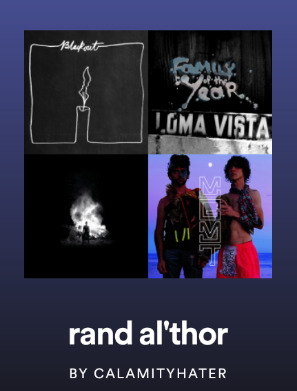
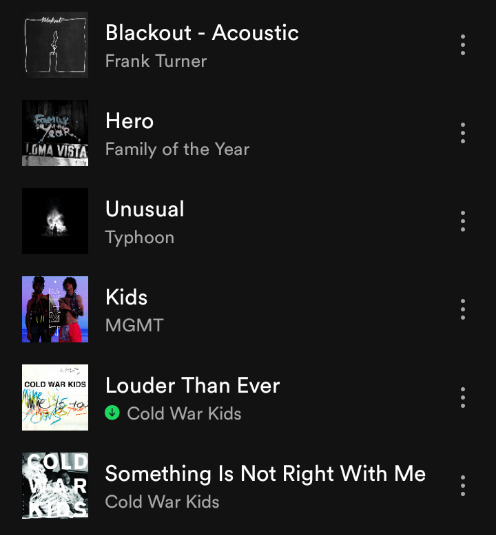
hey uh, throwback to 2019 when i made a rand fanmix. posting it because it can't hurt, but note that the track descriptions and song choices are all unedited.

. BLACKOUT — frank turner
but it’s not enough anymore
we can’t turn just around and close the door on the world
it’s asking uneasy questions
this one’s for winternight and the eye of the world. it’s the start of the world going to hell and being overwhelmed by the shadow (“are you afraid of the darkness?”), and it’s essentially rand against the world. he can’t just walk away from it— his house is attacked by trollocs, and the only option he has is to go with moiraine. he doesn’t really know what he’s up against, only that he’s up against something bad.
. HERO — family of the year
let me go
I don’t wanna be your hero
I don’t wanna be a big man
I just wanna fight with everyone else
this song’s all about not wanting to be a part of something big, just wanting a simple and easy life. at the beginning of the great hunt, rand really does not want to be the dragon reborn— I mean, who would? but it’s a role that he’s forced into, nonetheless. at his heart, he’s just a farmboy who wants to go home. moiraine kind of forces his destiny on him, not letting him postpone it or shove it aside. but at this point, he just doesn’t want to be a hero. the song itself is very soft (and acoustic to boot), which I think nicely represents the simple life that rand wants.
. UNUSUAL — typhoon
get your pitchforks out
the crowd is coming and they’ve named you
why, gentle mother, must you wring your hands and weep?
tide brings you a sword, sword will cut you free
dead demands a tribute in the hour of our need
blood be the river to wash the ledgers clean
oh, it took so much self-restraint to not put more than two songs from this album on this playlist. offerings is just so good AND highly existential, so if you’re wanting more sad rand hours, go listen to it. I think this song best fits rand’s start of really being the dragon reborn, around (you guessed it) the dragon reborn. the world is kind of a mess, and he doesn’t really know what to do, so he just does what he thinks he should do. he’s chosen by the pattern— the world demanded a dragon to save the world, and he was the unlucky soul born on the slopes of dragonmount. you know, his blood on the rocks of shayol ghul and all that. this song, like the one preceding it, is softer— rand hasn’t hardened himself like he will in later books. however, around halfway through, it gets louder and brings in more drums. tdr is the start of rand’s transition from farmboy to dragon reborn, in both good ways and bad.
. KIDS — mgmt
we like to watch you laughing
picking insects off of plants
no time to think of consequences
this song focuses a lot on the idea of self-control/self-restraint— not doing more than you have to, good or bad. it reminds me a lot of rand’s earlier experiences with channeling and being ta’veren. saidin is dangerous, what with the taint and all, and drawing too much of either half of the one power has severe consequences. he’s not as in control of his ta’veren-ness as he will be in later books— like his channelling, it’s a bit all over the place. the quote at the beginning of the music video (it’s friedrich nietzsche, not mark twain, but whatever) also ties in with this idea— if you’re not careful, you can become the very thing you were fighting against.
. LOUDER THAN EVER — cold war kids
I was carrying my cheek
I was digging my strange
I was taking you for granted
you were holding the reins
but I can hear you louder than ever
whisper to me, help me remember
I can’t see you but we’re still together
I can hear you louder than ever
moiraine’s “death” is a tipping point for rand— he feels like he could’ve prevented it, even though moiraine literally tells him that he couldn’t, and that what happened was the best possible outcome. after she passes through the portal, rand realizes that he took her presence for granted. her advice was good, if often unwelcome, and after her death rand just ends up going off the rails in so many different ways. when she returns in a memory of light, he realizes how helpful she was to him.
. SOMETHING IS NOT RIGHT WITH ME — cold war kids
something is not right with me!
something is not right with me!
something is not right with me!
I’m trying not to let it show
the taint on saidin is just really like that, huh? rand can tell that something’s wrong, with lews therin’s voice in his head. the thing is, he doesn’t let anyone know because he’s 1) scared of showing weakness and 2) sane people don’t normally hear voices. this song is fast, but not in an upbeat way— it feels chaotic, panicked, and just barely in control. the singer is almost shouting the lyrics instead of singing them, contributing to that feeling. I think it embodies most male channellers’ experiences with the taint— it isn’t smooth or calm like saidar, it’s a raging river of fire.
. DREAMS OF CANNIBALISM — typhoon
unhand me, I am not a criminal
but I’ve played a guilty part
in the modern sense that one pretends their life is original
I wrote a book and I will call it something cynical
the story’s slow, the hero does not change
and if he can, then he won’t anyway
instead his foes and lovers all become identical
this song ends with the line “soon enough you will be dancing at my funeral,” and I can’t come up with something that encompasses rand-as-the-dragon more. people are terrified of him— hell, even he’s terrified of him. the world doesn’t want a dragon, but they got one anyways. the second set of verses above is a more textual examination of rand at this point— a crown of swords through crossroads of twilight is incredibly slow, and rand doesn’t change much throughout those books (hence why this song covers 4 books). he could make a change in his life if he tried, but he doesn’t, since he thinks he needs to shut others out to protect them. the whole song seems to be conveying the idea of being stuck and not going anywhere, but running from yourself, which, to be fair, is very close to what rand experiences in his own head in these books.
. GHOSTS THAT WE KNEW — mumford and sons
so lead me back
turn south from that place
and close my eyes to my recent disgrace
so give me hope in the darkness that I will see the light
’cause oh, that gave me such a fright
but I will hold on as long as you like
just promise me we’ll be alright
I picked a soft song for the softer scene in the gathering storm where min and rand are talking about how cold he’s become. he realizes that he doesn’t have to fake an uncaring and unemotional nature— to be human is to feel, and it’s not bad to be human. the song is about going through something that’s wearing you down (a common interpretation is depression), and knowing that you have someone helping you through it. min sticks with rand during almost everything that happens from lord of chaos to the end of the series. she’s a support for him, and too stubborn to ever leave him, no matter what.
. DARKER — typhoon
I tried, you know, just to toe the line
love all the neighbors and live in the light
sure, I stumbled sometimes
self-contained; a convenient lie
every source of pain, every sting of pride
had to come from the outside
you won’t even fight me fair
wait for the darkness, catch me unaware
yeah, you pull me close
then you twist the knife
of course, that happy, warm feeling can’t last, because that scene is followed by semirhage being sadistic and deciding that now is the perfect time to use this new torture device. because of that, rand ends up shutting himself off even more than before. he’s suspicious and cruel, and thinks only for himself. it’s scary, frankly. darker, like all the songs on the album that it’s from, is very existential, though this song is, fittingly, darker than the others. it’s filled with the sense of impending death and strong suspicion that characterizes rand at this point in his life. he tried to open up, and look where it got him. this quick change is mirrored by the sharp musical contrast between the quiet, acoustic ‘ghosts that we knew’ and and the more drum-heavy, electric, and distorted ‘darker.’
. MOUNTAIN AT MY GATES — foals
I see a mountain in my way
it’s looming larger by the day
I see a darkness in my fate
I’ll drive my car without the brakes
through lanes and stone rows
black granite, wind blows
fire lake and far flame
go now but come again
dark clouds gather ’round
will I run or stand my ground
oh, when I come to climb
show me the mountain so far behind
yeah, it’s farther away
its shadow gets smaller day after day
the obvious scene for this song is the events leading up to rand’s epiphany on dragonmount. I mean, ‘mountain’ is in the song’s name. I think that this song works well to represent the weight and lack of direction he feels in the days building up to that. something that works especially well about this song is how it builds, both lyrically and musically. the song starts with a hopeless and dark tone to the lyrics, and stays that way for a while. the bridge (second set of lyrics above) is where the tone starts to change. the bridge also uses a lot of imagery that one can tie to the buildup— the streets of ebou dar, the rocky and windy peak of dragonmount, the belly of fire in the mountain itself and tar valon, the city that the peak looks over. the song then crescendos into its final segment, where the singer sings “give me my way/give me my love/give me my choice/give me my fate/give me my lungs/give me my voice.” to me, these represent rand’s realization that the reason the wheel keeps turning is so that people can live again and love again.
. COLORFUL — jukebox the ghost
we're just getting started
take your fears and let them go
for the lovers and the broken-hearted
I! love! this! song! I haven’t found another song that captures that feeling of hope in darkness: when everything around you has gone to hell, but you keep going because the darkness isn’t all there is. that’s how veins of gold ends— with rand realizing that there’s something worth fighting and living for. the gathering storm literally ends with rand laughing without bitterness for the first time in months, if not years— he’s finally looking on the bright side of life again.
. BEAUTIFUL LIFE — the collection
you do not have to be good
even the best of us have been misunderstood
so get up onto your feet
the sun is shining repentance through the leaves
its rays will wash you clean
this one’s for the end of a memory of light, when rand decides to leave and live the rest of his life on his terms. he wants to explore the world, without the pressure of his past and who he was weighing on him. he has a chance to slow down and appreciate this “beautiful life,” instead of rushing through it towards tarmon gai’don. and that’s what this song is about, i think. it’s not super peppy, and neither is rand at this point. it’s more of a quiet and peaceful acceptance.
. ALL THESE THINGS THAT I’VE DONE — the killers
I wanna stand up, I wanna let go
you know, you know, no, you don’t, you don’t
I wanna shine on in the hearts of men
I want a meaning from the back of my broken hand
over and in, last call for sin
while everyone’s lost, the battle is won
with all these things that I’ve done
first of all, the wheel of time series takes place over the span of two years, and rand does so much within that time. within this playlist, I don’t think of this song as an ending, rather a summary of rand’s life through the books. I specifically want to talk about the iconic refrain of “I’ve got soul but I’m not a soldier.” it serves as a bookend to rand’s arc as a character— initially he refuses his role as the dragon reborn (even though he’s suited for it, due to his heritage and upbringing) because he doesn’t want to fight in that way. during the bulk of the series, he embraces a role as a fighter, even though he doesn’t have the soul for it. and finally, he realizes that he isn’t a weapon, and that he never was. on another note, the line “these changes ain’t changing me/that cold-hearted boy I used to be” hits a bit too close to his character.
#the wheel of time#wheel of time#rand al'thor#wot#fanmix#dislike him but this deserves to be out there so that people who do like him can enjoy it#matt speaks
6 notes
·
View notes
Text
under a cut because this got VERY LONG and VERY RAMBLY
i just wanted to compare this song to tpoh (yes i know it has its own story but that’s not what we’re talking about today)
( if you need to copy-paste: https://www.youtube.com/watch?v=80sl53M0L6s )
hear me out here because this may seem like a stretch at first but when you see it all down on paper it’ll make more sense I pROMISE--
i’m gonna try and put images in for better readability, so it isn’t just a big ol’ slab of text-- i’m also gonna be skipping lines that i don’t really feel correlate, but most of them do so like. it’s fine lol.
"Don't go across, the longer road's safer, watch as the bolt's trajectory wavers."
RGB talks a lot about detours and taking different paths to throw (presumably) Hate off his tracks, and it makes me think of that!!!!

“Learn it by heart, now the hardest part comes--”
RGB has gone through so many Heroes he’s pretty much learned the cycle by heart, and he’s almost running off a script-- Meanwhile, ‘the hardest part’ makes me think of that line from Suture when he’s breaking it to Hero that she can’t go back!

“--When staggering doubt paralyzes you,”
kind of obvious, but this part goes hand-in-hand with Hero being ‘consumed by doubt’--
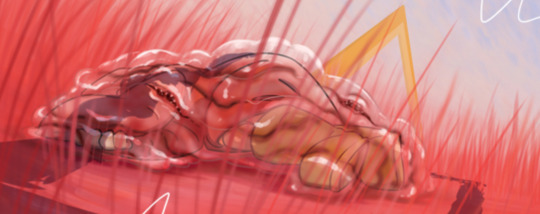
“And then, you fall apart like a house of cards, might as well disregard it as a cursory mantra.”
as i said before with the ‘now the hardest part comes’ line, RGB has rehearsed this talk a bunch of times with different heroes so it’s like a ‘cursory mantra’ at this point--
“[ ... ] It's getting harder to act like I don't really care,”
do i even need to say it lol
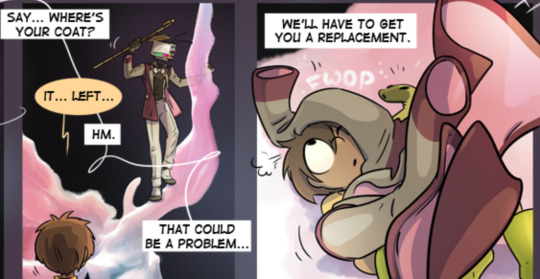

“I'm sorry but these earnest words of yours are just too much to bear...”
I’m sure i’m not the only one who noticed this but RGB actually does look a little hurt when Hero lashes out at him? anyway he cared a lot more about her in the beginning than he let on
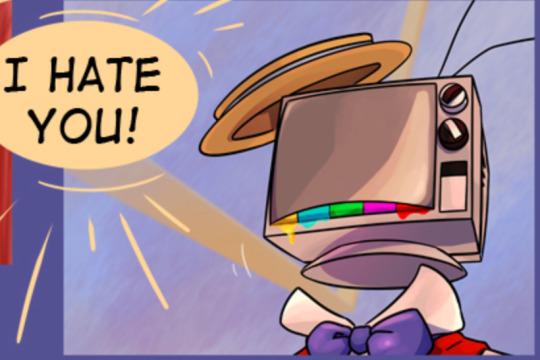
I’m aware of the whole Russian segment in the middle (there’s a translation in the captions as well) but the lyrics don’t really make me think of anything in particular honestly-- the MUSIC CHANGE, however, definitely makes me think of the dream segments and if i WERE to make an amv that would be where I’d put the dream segments anyway-- that’s all i have to say on that part
“[ ... ] In a desperate attempt to hold onto your battered hand,”
again, not sure i even need to say it, but
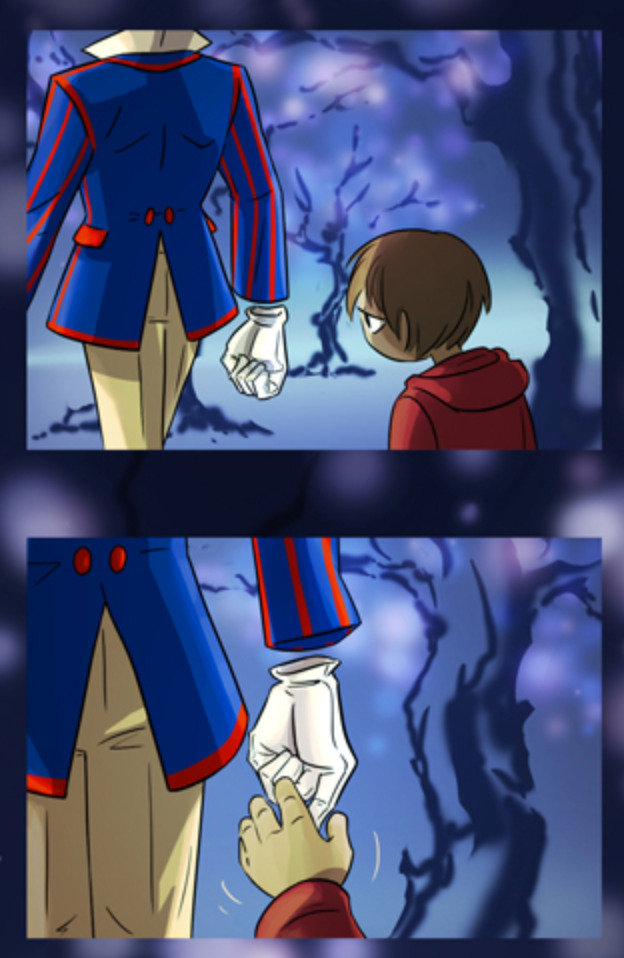

“[ ... ] ‘Strong enough to let it go,’ he says, but, darling, I don't know!”
This part makes me think of Hero’s choice to move past RGB betraying her-- but, of course, moving past it ≠ forgiving it, so she’s still mad at him (obviously)

“This isn't my first time sinking lower than the low...”
This isn’t RGB’s first time recruiting a Hero-- and he’s sunk ‘lower than the low’ a LOT, and-- as much as we all love him-- we all pretty much just agree he’s a coward, a liar, a thief, and a petty bastard. Even RGB himself agrees on these points. It also makes me think of Click’s confrontation-- since it’s pretty obvious he considers RGB stealing their lives away to be ‘sinking lower than the low’.
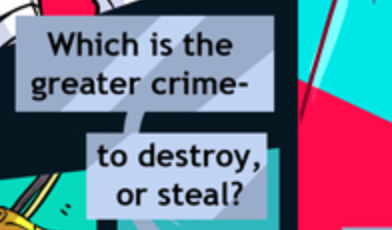
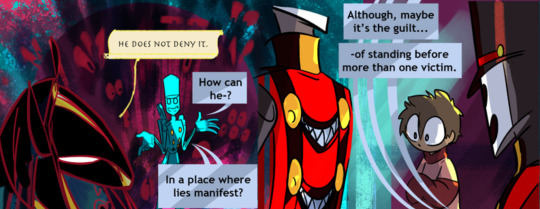
“How hard can it be to never let it overflow? Oh, I've gotten used to being haunted long ago.”
RGB has expressed-- though nonverbally-- that he still regrets that he let his Heroes died. And like..... ‘how hard can it be to never let it overflow’ is basically his mantra considering how much he bottles up. He’s also gotten used to generally being disliked-- if not hated-- by almost everyone in TWOMB, and also just to feeling bad about himself (someone PLEASE get this man a therapist)
“[...] Through the haze and through the maw of the grinder, I won't find her, but I'll guide you through them all.” no deep analysis on this one it just makes me think of when RGB and Hero lost each other in the marketplace lmao

“[ ... ] Now, remember, dear, you've always been too kind!”
Let’s be completely honest here, Hero’s probably the most forgiving out of all of the Heroes, aside from maybe Gladys (and also not counting Dial since we don’t actually know what his real opinion is--) Click considers her choice to save him ‘too kind’, so, well... you know what happens.
“Oh it's nothing new, the visionless leading the blind; It's easy to say, ‘why don't you leave it all behind?’”
This definitely makes me think of RGB luring people away!! No one who accepted the deal actually knew they’d be unable to return, so they were ‘blind’ to it in a sense! And as for the ‘why don’t you leave it all behind’ part, well I mean-- you have to admit, the idea of getting away from everything is reallly tempting.
“And this moral compass is forever misaligned...”
Obviously this is about Click because his moral compass is ALMOST right but at the same time completely and utterly fucked, I mean, he tried to kill a child for disagreeing on RGB’s deserved punishment--


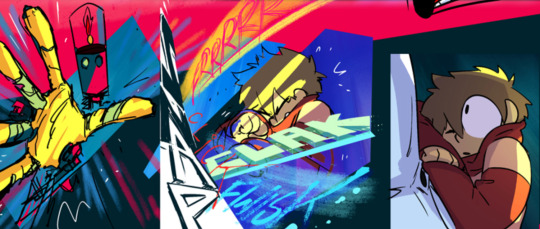
“All I need to hear is that you'll be there, by my side-- But you can never know that...”
RGB does end up getting VERY attached to Hero and, I think the very moment he does realize that (fittingly) is when Hero says that he’s not evil or good, but neutral instead (which is sad because that implies this is the best opinion he’s gotten from someone but that’s a whole other can of worms) Obviously she can ‘never know that’ because what about his PRIDE and he SAID he WOULDN’T GET ATTACHED (...not that it helps because he’s dug his own grave already)


“‘Too strong to die,’ or was that me again?”
This line makes me think of two things-- It makes me think of Time’s comment on him ‘never fully’ being dead, and also makes me think of Negative because... you know. too strong to die.


“I know that there has to be some hope that's just out of sight...”
This part makes me think of the Nothing-- RGB almost loses hope on (at least one of) them surviving twice-- but he came up with solutions! (even though one was completely heartbreaking...)

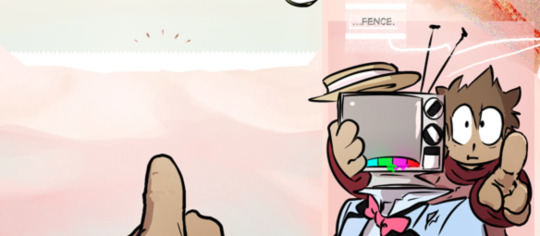

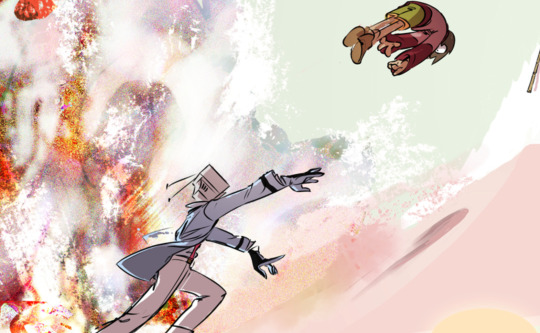
“...I won't let myself lose it again--”
This feels like it’d be RGB referring to losing Heroes-- he would almost definitely never forgive himself for losing our Hero at this point. It also feels like sort of an internal dialogue to match him throwing Hero towards the fence.
“--And now my only hope is that one day you'll understand...”
This obviously makes me think of him explaining his reasoning behind saving the world in Ex Position-- but it also makes me think of the page just before it transitions to Greenlight? I haven’t seen anything about this, but that little flashback makes me think that Hero is either, a. thankful to RGB for saving her, or, B. frustrated he chose to sacrifice himself and leave her alone like he did.
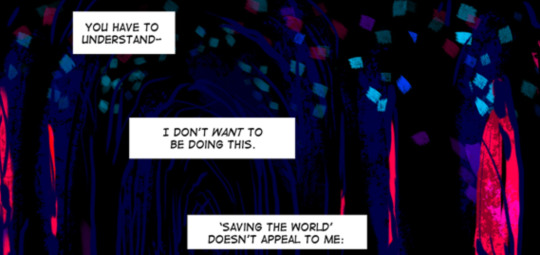

“[ ... ] [I’ll] save what's left, though I know that, one day, this weight will come to break my back.”
This makes me think of RGB being afraid to fully connect to Hero at first, because he didn’t want to be hit as hard when she inevitably died, (or would have, if not for the mercy of Protagonist’s Luck--)
“Once again we were left in the dust,”
Hero was left on her own ‘in the dust’ after the storm receded. Not much to say there.
"Self-hating ones like us crack when we betray someone's trust.”
Short version? Please get this telly and his child some therapy. Long version? In Target Audience, he seemed like he was going to make a (feeble) attempt at explaining Click’s accusation away... until Hero speaks up.

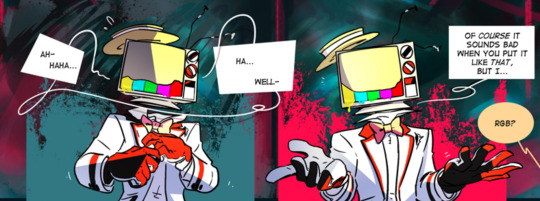

“So if you must, shield your heart with these layers of rust--”
This makes me think of RGB-- but more evidently (especially combined with the next line), the Green Sun.
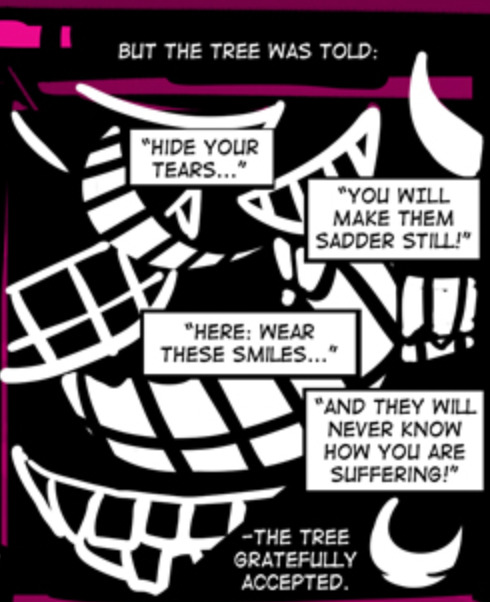
“The sun will rise-- Until then I'll be waiting for you on the other side...”
Pretty self-explanatory in the first part-- i don’t really have anything for the last part unfortunately though, especially considering we don’t know what actually is going to happen to the sun yet...

but, uh, that’s all! I just. had these thoughts. and wanted to talk about them. because i like writing essays like this.
tysm for reading all this because i absolutely infodumped here
anyway go support Ferry, they’re the artist and their music slaps
in summary:

#tpoh#the property of hate#tpoh... analysis...??? what do i even TAG this as????????#anyway. i wasn't joking when i said this song had a million connections with tpoh in my head#pitch rambles
11 notes
·
View notes
Text
July 2020





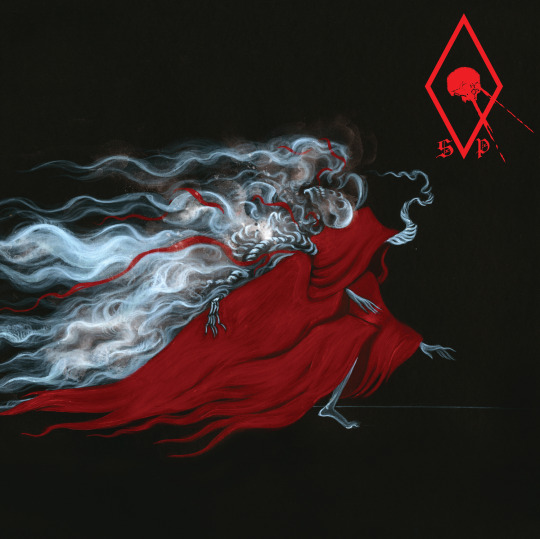



Machine Head - Civil Unrest
On this two-song EP, Robb Flynn once again leans into spur-of-the-moment inspiration in an effort to jolt Machine Head out of the creative fatigue that plagued the polarizing Catharsis, but unfortunately the approach that didn’t really work for “Volatile” doesn’t really work for “Stop the Bleeding” or “Bulletproof”, and it all adds up upon the revelation that these songs are constructed from scraps off the Catharsis kitchen floor. Robb’s finger is on the pulse of the tension underlying American politics and his heart is in the right place (which I commend him for his steadfastness to in the face of the apparently sizable chud subset of Machine Head’s fanbase), he just needs to take his delivery a little off the nose. Of the two songs, “Bulletproof” is definitely the stronger and more hard-hitting, while the goofy 2000′s metalcore melodicism of “Stop the Bleeding” meshes poorly with the grim subject matter Robb attaches to the track. In the grand scheme of Machine Head’s career, this EP (and the two non-album singles that preceded it last year) is disappointing filler that does nothing to lift the band out of the dry creative well they’ve found themselves in.
5/10
Khemmis - More Songs About Death, Vol. 1
A much more solid two-track EP, Khemmis’ More Songs About Death, Vol. 1 is comprised of a groovy cover of Misfits’ “Skulls” and an acoustic rendition of the folk song, “A Conversation with Death”, that the band had covered electrically for a split they did with Spirit Adrift. The band adapt well to the more original acoustic style of the latter song, as soulful as ever even with acoustic subtlety replacing their open-hearted doom metal. As for the Misfits cover, the band apply their signature harmonic doom guitar work to give it a signature seal while adhering to the core foundation of the song, and they show that the song does take to their brand of doom quite well. After Desolation and being signed to Nuclear Blast, Khemmis sure were excited to get working on their fourth LP. Now that of course sits on the list of many projects the pandemic has forcefully postponed, but these kinds of offerings and the band’s hinting that they might just come out of this with two albums’ worth of material is helping make the wait a little more bearable. Thank you as always, Khemmis.
more respect to Khemmis/10
Inter Arma - Garbers Days Revisited
Coming off the back of their magnum opus, Sulphur English, Inter Arma’s offering to hold the quarantined world over until the band’s next opus is a quick (by their standards) covers album of metal and hardcore classics, as well as some surprising classic and southern rock tunes. And the band manage the eight diverse songs with an impressive display of two-way adaptability. Turning “The Girl Who Lives on Heaven Hill” into a blackgaze blast-beat fest and “Scarecrow” and into a crushing blackened sludge-doom epic while layering their atmospheric black metal smoothly over the old-school rock grooves of Neil Young’s “Southern Man” Inter Arma show an aptitude for selecting cover songs that fit their style. It sure helps that they’re a versatile act too, bending their mammothian heaviness to suit the core appeal of covers of Cro-Mags’ “Hard Times”, Nine Inch Nails’ “March of the Pigs”, and Venom’s “In League with Satan” while shedding all that sludge to expose their southern rock roots on (slightly) more stripped back tunes like “Runnin’ Down a Dream” and Prince’s “Purple Rain” (a closer so fittingly beautiful it seems almost unfair), which find them embellishing soulfully and clearly enjoying themselves in the studio. A lineup of tracks like this would make be nervous for whatever band was trying to tackle them, but Inter Arma prove that can shapeshift back to their southern roots just as well as they can bulldoze as needed to do their own justice to these several tracks, making for one of the best cover albums I’ve heard for a while.
8/10
This Will Destroy You - Vespertine
Serving as a soundtrack project for a highly rated California This Will Destroy You seemingly took a long time with this project, having released the “Kitchen” single in 2017 under the same premise. The album is entirely ambient, and not quite as experimental with glitchy electro-ambiance as projects like Tunnel Blanket or Another Language were. Instead, Vespertine highlights the serene/somber atmospheric foundation of the band’s post-metal/rock sound that made the Young Mountain EP and their self-titled LP such transcendent experiences and exemplary advocates for post-rock upon their release. And it’s a great display of just how the band’s discernible ambient style can shine through even such a minimal approach. It is basic ambient music for sure, no additives, but it’s unmistakably This Will Destroy You to those who know them, and it hearkens back to some of their best work, so I see it as a welcome addition to the band’s catalog.
7/10
Static-X - Project Regeneration, Vol. 1
Rebooted in honor of Wayne Static after his untimely passing in 2017 the original line-up and Dope frontman Edsel Dope behind a mask resembling the late singer and the pseudonym Xer0, Static-X return after over a decade of radio silence since 2009′s Cult of Static to mesh the final recordings of Wayne Static for the band with contributions from Xer0 on the first of two volumes of new material under this premise of paying tribute. Despite the lengthy absence and the loss of the band’s central creative force, the album is a mostly smooth transition from Cult of Static with some callbacks to the electro industrial metal of earlier albums like Shadow Zone and Machine. While it captures the essence of Static-X across its 39-minute track list with a handful of hard-hitting industrial nu metal bangers, Project Regeneration - Vol. 1 is a bit of a dry recount of the band’s legacy, and I hope the band saved the better chunk of songs for the second installment.
6/10
An Autumn for Crippled Children - All Fell Silent, Everything Went Quiet
An Autumn for Crippled Children is an anonymous Dutch trio who are helping to keep the blackgaze movement going with their eighth full-length album here. The band released their seventh not long ago in 2018, but this year’s is my introduction to the band, which has been a pleasant one. All Fell Silent, Everything Went Quiet is a moderately sized offering of heartfelt blackgaze as you know it from the likes of Deafheaven and Ghost Bath channeled through more second-wave-like stylings of the Norwegian black metal scene; so it sounds kind of like if Mayhem made more open-hearted music rather than deflected edginess through Satan-worshipping (not to shit on Mayhem or anything). There is more to this album, however, than just diluted or lo-fi Deafheaven worship; through the haze of the band’s fuzzy blackgaze is some pretty dynamic songwriting and impressive. More than just soaking distorted guitars in reverb and juxtaposing blackmetal screams with post-rock ambiance, An Autumn for Crippled Children capture some of that emotional diversity that makes blackgaze at its best (...Sunbather) so divinely captivating. And the spacious beauty the band conjures out of the negative space in the static-y guitars and thin percussion on songs like “Water’s Edge”, “Paths”, and the title track is surprisingly enveloping, but the standout cut on the album I’d say is the very unashamedly Ghost-Bath-y “Silver” for its overt heartfelt delivery with every instrument and its integration of what even sounds like a piano. I doubt this would convert many black metal purists who idolize Burzum and Darkthrone. In fact I bet this album would upset them even more than New Bermuda, but for those without a stick up their ass, looking for some juicy blackgaze with a different set of ingredients than your Harakiri for the Sky or Wolves in the Throne Room, this is some good shit.
8/10
Bury Tomorrow - Cannibal
I gave this one a good several tries because 2018’s Black Flame grew on me significantly after my incredibly underwhelmed first couple of listens, but sadly Cannibal strikes melodic metalcore gold far less often than its predecessor and finds Bury Tomorrow knee deep in the unflattering tropes that the genre is trying to shake off. With a pretty one-note approach to melodicism that results in a largely homogeneously flat emotional tone across the album, it’s definitely a step down from the emboldened and invigorated Black Flame that negates any sense of the band’s ambition that that album might have given off. I can point out “Better Below” and the brief breakdown on “Gods & Machines” as mild highlights in the tracklist, but they only really stand out because the rest of the surrounding tracks are so dry. I’d like to say that things just didn’t click this time or that some experiments just didn’t pan out, but it’s quite clearly just the lack of imagination and ambition that sinks this project deep into the background of forgettable metalcore, and I know this band can do better.
4/10
Kansas - The Absence of Presence
They’re hardly even metal-adjacent but for their sizable contribution to the 70′s prog rock movement that such a huge proportion of metalheads are into, a new Kansas album I suppose counts as on-topic for this blog. The band returned after a decade and a half of absence with a stuttering restart without iconic vocalist Steve Walsh on 2016′s The Prelude Implicit, and it was clear that they needed to do more than yearn for glory days to get the gears back in motion, so with The Absence of Presence the band’s new blood has stepped up to the plate to inject some freshness into the band’s compositional process. The band still sticks to that core violin-spiced prog rock that characterized their iconic 70′s albums, but the structuring and soloing style (especially the keys) are a bit more modernized than the band’s past work, and by modern I mean what Dream Theater sounded like in the 2000′s. Make no mistake, though, it’s an improvement on The Prelude Implicit, and it highlights the band’s talents and natural grandiose tendencies far more than the radio rock singles they’re most widely known for, and the cinematic bridge of the opening title track is sturdy proof of this. It’s a testament to the influence they have had on modern prog through the genre’s biggest bands like Dream Theater, and perhaps a testament to the two-wayedness of that street as well as fun, bombastic tunes like “Throwing Mountains” sound like they would fit easily on something like A Dramatic Turn of Events or as a break from all the melancholy on a Steven Wilson project. The album does wear a little thin on ballads like “Memories Down the Line”, but it makes up for its duller moments with plenty of exuberant prog expressiveness on most of the songs (the closing track being probably the standout example), which should be a good time for most of the band’s fans who fondly remember albums like Masque and Monolith, and any newer prog fans who may not be aware of the band’s influence on today’s prog metal.
7/10
Haken - Virus
Speaking of respectable modern prog though, Haken’s aptly named album this year serves as quite the easy bar to clear for prog metal so far this decade. I regretfully missed out on their 2018 sister album, Vector, but I am partially mending that ill by covering Virus here. Like I said earlier, it’s a solid record that captures the smoothness and tempered heaviness of Soen and the attitude of early Opeth with the angularity of Tool, but even if it ends up being the year’s best prog metal album, I don’t think it will be too long before one of the genre’s juggernauts (or even exciting new faces) kamehamehas this one away. The album starts out pretty solid in its first few tracks, but remains pretty meager and restrained in its explosiveness until midway through the album, relying on rather short bursts of typical prog heaviness like the opening of “Prosthetic”, whose rumbly bassline is a delicious highlight amongst the Townsend-esque choir implementation. The ten-minute “Carousel” ups the band’s expressiveness after the deceptive soothe of the second track with a clash of goth-y ambiance and pounding metallic bombast. The five-part “Messiah Complex” suite finds the band at their most adventurous, straddling the winding mid-song compositional whirl of Dream Theater with the occasional eccentricity and djenty heaviness of producer Nolly’s former band Periphery, the band still sound themselves and confident in every move they make, like true prog masters, ending beautifully on the two-minute “Only Stars”. I think it might end up being the year’s best straight-up prog metal album, and the band have worked hard to earn that honor, but I would honestly be surprised if someone else or Haken themselves don’t outdo it within a year. That’s to take away from what an exciting 52 minutes of prog this is, because with such a moderate runtime for such a tight prog album, it’s definitely deserving of the respect of a top album in its field.
8/10
Skeleton - Skeleton
Even though I tend to end up liking them, I find myself skeptical of projects whose aesthetic feels forcedly retro or whose marketing is focused heavily on nostalgia, and the self-titled debut from the Austin-based trio, Skeleton, complete with its intentionally cheesy and amateurish cover art, definitely checked those boxes. I even got the sense from 20 Buck Spin (being that I’m on their mailing list and follow their accounts and all) that they were more excited than usual to be releasing the trio’s debut. And honestly, after a few listens through of not being all too aroused by the crusty proto-death metal at the core of the band’s sound, the traditional heavy metal focus on infectious guitar riffs helped the album grow on me a good bit. The stylistic versatility of the guitar playing really is the cornerstone of the album, from the Kill ‘Em All-style riffs on “Taste of Blood” and early Sepultura-esque galloping on “At War” to the blackened punk grit of “A Far Away Land” and the even more catchy classic metal riffs on “Turned to Stone” and the melancholic old-school doom atmosphere on “Ring of Fire”. The snarled black metal vocals are gnarly in that old-school sense, throaty and raspy but kind of cheesily thin too to fit with the aesthetic the band are going for, and it’s a pretty similar story with the drums: not flashy at all by today’s standards but just right to supplement the guitar work and complete the vibe. And of course with 11 tracks not even grazing the half hour mark, the songs are pretty trim and compositionally bare bones, falling into quick, crust punk formats foregoing the typical verse-chorus paradigm. Yes, Skeleton has grown on me, and I’m curious to see if they end up expanding this sound like Ghost did from Opus Eponymous to stay creatively fresh or if they plan to draw from the long-abandoned (or less frequented) wells of musical elements they did on this album for the foreseeable future.
7/10
Burzum - Thulêan Mysteries
I know that in a lot of circles (including some I consider myself a part of), saying something even vaguely positive about Burzum invites a wave of disapproval for supporting (or at the very least, excusing) the black metal world’s most notorious villain’s racism, but I can’t say with a straight that Varg Vikernes didn’t play a huge part in shaping Norwegian black metal as we know it or that I don’t like Filosofem or Hvis lyset tar oss. I don’t think that amounts to supporting the guy’s racist bullshit, and luckily Varg has made it pretty easy not to support his racist bullshit because Burzum has been shit for a long long time now; in fact I’d say Filosofem was the last worthwhile Burzum album, with his pathetically bad ambient records during and after his time in prison and the three stale black metal albums that welcomed him back from prison. After such a weak return to music from prison and Burzum’s discontinuation-turned-hiatus, it seemed overdue that Varg finally retire the Burzum project after the unimaginative ambiance of The Ways of Yore. I mean the project has thoroughly emulated the trope of the white guy who views everything he touches as way more genius than anyone else does, which is pretty rich for a guy so willing to dismiss the current black metal scene as derivative, and he’s seemed more invested in whatever it is he’s been doing on YouTube or his blog. Nevertheless, Varg remains an infamous figure in metal probably to a lot of dudes who think there’s some esoteric genius to decode in his lore, to an extent I find kinda disturbing. The weird reverence a lot of the metal community has for the neo-nazi murderer’s cult of personality (the vast majority of whose discography is masturbatory throwaway doodling) is astounding. So this guy’s back, with an hour and a half of, by his own account, ambient scraps of dungeon synth music that he built up over an extended period of time and basically figured he’d compile into an album (because, like I said, everything he touches must be gold in his eyes), and goddamn it sure sounds like exactly what he pitches it as. The first track, “The Sacred Well”, is actually pretty soothing and decent helping of ethereal ambient music, but it doesn’t take long for things to go downhill. The annoyingly repetitive acoustic motif of “ForeBears” and the absolutely amateurish improvised piano plinking of “A Thulêan Perspective” quickly shed light on just how lazily patched together this thing is, while the subsequent “Gathering of Herbs” literally cuts off awkwardly like the full track didn’t upload fully. A few tracks like “Jötunnheimr” and “The Road to Hel” offer some fleeting promise in their eeriness, but they disappear as quickly as most of the tracks here do, in a flash of confusion as clearly incomplete ideas piled into an album for no reason that even Varg can justify. The last third of the album contains some of the longer tracks, but the swapping of fragments of half-assed keyboard doodles for half-assed demos spread thinner than tissue paper is a trade-off akin to the upcoming general election and it’s too little and way too late. I have to highlight the laughably farty synthesizer horns on “Ruins of Dwarfmount”; I mean thank god it’s quick because it’s absolutely awful, but the chuckle I get out of how bad it is is probably the best experience I have from this whole album. Just about everything on here is some combination of irritatingly repetitive, blatantly incomplete, or grossly unprofessional, and the thing that gets me is that it’s not like ambient music or dungeon synth is any sort of rocket science. I’m not at all the kind of music genius Varg’s weird devotees see him to be, but given the same equipment, even I could undoubtedly make a better ambient album than this. Although I’m not nearly as well-versed in ambient music as I am in metal, I have heard enough of a chunk of it to say I know the good shit and the bad shit, but honestly, this album is a new low for me. I didn’t know an ambient album could suck this much. It’s like an extended Daudi Baldrs with a slightly better keyboard, but with no excuse this time for the cheapness of the sound and certainly not the length. Yeah, piece of shit.
2/10
Boris - NO
Tokyo’s prolific sonic shapeshifters have all but given up on giving up, and I suppose the title of this year’s record summarizes their brief questioning of if they stop making music. The band’s first intended farewell album, Dear, which found them (not really) bowing out to the sorrowful drone doom of their most iconic record (Pink), was followed them by last year’s LφVE & EVφL, which saw them revisiting various shades of their career as comfortably as ever. NO finds the power trio on another stylistic tour of sorts, this time through some of their heaviest and most grimy territory, starting from brooding sludge doom to spending most of the album on Slayer-esque thrash and hardcore punk ripe with gritty attitude. The production is thick and nasty as is usually best for Boris, but the writing on this record is just kind of absent-minded for such a stylistically varied project. While the more drony opener, “Genesis”, rides its runtime well on the raw heaviness that the band put the pure simplicity of their slow groove through, the farther the band step away from their wheelhouse, the more apparent sparseness becomes of the more underwritten songs like the meatheadedly punky “Kikinoue” and “Fundamental Error”. We get some crushing riffs like that on “Anti-Gone”, but also some clumsy wailing about like on the song “Lust” that calls into question the effort Boris put in at the drawing board. The sheer power is there, but it’s being used generally inefficiently on a sizeable portion of NO. Still, it’s pretty cool to hear Boris at this pace, and the pure energy they pour into this project is enough to get the job done.
7/10
Tuscoma - Discourse
Tuscoma’s follow-up to the wildly eccentric Arkhitecturenominus is gets off to a slow start with its rather generic churn of blowtorch-blackened post-metal through its first two tracks and is short on risks for the reputably ambitious duo, but Discourse does eventually kick in to dig deep to tap as much of the frightful potential of the band’s sound and showcases a decent example of what the New Zealanders are known for and of lies out in left-field of post-metal.
6/10
Executioner’s Mask - Despair Anthems
Making their debut as a collective for Profound Lore, the quintet of seasoned post-punk creatives embark on an eccentric voyage through darkwave on a ship of modern gothic rock, and the results are as fascinating as they sound on paper, recalling the cerebral ritualism of Children of God-era Swans as much as the energetically veiled despair of Type O Negative and AFI while dipping the rock elements into the industrial side of darkwave every now and then. And again, the product is an effortless immersiveness into the record’s moody journey, not through atmosphere-building, but through the infectiousness of the goth dance numbers take you on. It’s certainly more of a metal-adjacent album than a bonafide metal album, but the way the band captures the despair they set out to is as effective through more subtly seething means as DSBM’s best, and the band’s adventurousness with their sonic palette alone makes for an interesting listen, or several, as I will certainly be giving this project more than its fair share of my ears.
8/10
Ensiferum - Thalassic
Very similar to Amon Amarth’s longtime solidification of their sound, the Finnish talents seem able to simply exhale exhilaration through their both tried-and-true and continually honed black-reinforced power folk metal. And it’s clear the band are on autopilot at least to some degree on Thalassic here because the writing is pretty homogeneous and formulaic nearly all the way through; that being said, the sheer energy of the band’s performances into a sound experience allows them to wield so effortlessly more than carries them across the seas they sing of.
7/10
Bedsore - Hypnagogic Hallucinations
Stepping out from the shadows of Italy to present the great big world of metal with their forty-minute debut-album, the four-piece on the 20 Buck Spin label make their grand atmospheric aspirations for their brand of death metal immediately known across seven tracks of hellish wails and haunted ambiance. Taking ominous clean guitar motif-writing and structuring influence from Neurosis to the point of uncannily resembling “Souls at Zero” on the second track, “The Gate, Closure (Sarcoptes Obitus)”, Bedsore still inject plenty of their own distorted flair into the cavernous death-metal-flavored howl they espouse on Hypnagogic Hallucinations. The band do bank rather heavily on the immersiveness of the atmosphere they try to conjure, leaving a blind spot in the album’s dynamic beyond the fluctuations between clean and distorted nightmare. Compositional shortcomings aside, this is a solid debut to set the Italians on a bright prospective future.
7/10
Spirit Possesion - Spirit Possesion
Blackened thrash metal is one of those smaller subgenres within metal that feels more like a niche occupied by a few stalwarts like Aura Noir, Goatwhore, and Deströyer 666, but now Spirit Possession is making the bid to join those ranks and potentially turn more spotlight onto the specifically hybridized style. The band’s self-titled debut brims with the thrash enthusiasm of Bathory and the old-school riffing that shaped the way the early progenitors of black metal composed theirs, and not only is the Portland duo’s riff-game on point, but goddamn does it sound savory and spicy as hell through the more flattering production and against the backdrop of modern black metal a la Watain. The nasty chug on the song “Swallowing Throne” really highlights the benefit of the thicker, tastier production. The exceptionally grand “Amongst Inverted Castles and Holy Laughter” is a fine example of the band straddling old and new with impressive flexibility, while the bulk of the album's indulgence into early black metal and thrash is impossible not to want to indulge with, like a really fun party with a good crowd that makes it so much easier to have a few more drinks than you originally intended to.
8/10
Defeated Sanity - The Sanguinary Impetus
Through just enough delicious riffing, memorable accentuation, and technicality on par with Dying Fetus packed into structurally creative bite-sized portions, brutal death metal stalwarts Defeated Sanity somehow make a pretty persuasive take-it-or-leave-it case for the genre.
7/10
Paysage d’Hiver - Im Wald
The boldly two-hour debut double-album from Paysage d’Hiver is also a bit of a double-edged sword, basing partly its very ethereal black metal atmosphere on the homemade sound that regularly kneecaps the grander feel the project is going for. And the album does indeed reach some soaring heights of blizzard-stung ambiance, which the biting sound of the tinny, but engaged, percussion and the vexed swooning of the tremolo-picked guitar playing across the album’s several indeed well-organized lengthy tracks. It takes a lot to trudge through the long path covered in thick snow that this album sets out on, and the lo-fi production often doesn’t help the individual elements that make Im Wald enjoyable stand out, and it can be all too easy to get lost in the homogeneous whitewash of the hazy winter wind. It’s a rewarding journey to finally make it all the way through with unbroken attention, but blame for the easiness of that attention being lapsed can at least partially be placed on the shoulders of Paysage d’Hiver for its mastermind’s one-note approach to an otherwise well-arranged and well-composed album.
7/10
Gaerea - Limbo
Despite the members’ faceless appearances behind their fully-covering black cloth masks, Gaerea’s music does not hold back its sorrowful outpour through heavy atmospheric black metal that crashes through and drowns like torrential flood waves as much as it tears at the heartstrings through unabashed languishing. The massive weight of the band’s sound invokes the feeling of being in the presence of an incarnate deity weeping at the ills of mankind and the destruction they have forced this deity to bring about. Abstract descriptors of the album’s experience aside, the band aren’t really doing too much new for the atmospheric black metal they’re making, not breaking any rules or pushing any boundaries, but everything that makes the genre so attractive is turned up to eleven. I was ready to be as critical as ever, but I could immediately see not long into my first listen why Season of Mist were so excited to hype up the Portuguese outfit’s incredibly accomplished sophomore release. The guitar playing is simultaneously powerful and beautiful, much like that of the Ulcerate album from earlier this year (Stare into Death and Be Still) that I also loved, and the drumming is just as ceaselessly thunderous in support. The lamenting screamed vocals are possibly the least exaggerated facet of the album, but certainly not the the point of being unfitting, in fact they fit the chaotically despondent mood quite well, or a detriment to the record’s overall barrage of mourning. As for how all these massive pieces are arranged, they all crash in synchronized waves in a fashion, again, not at all unfamiliar to anyone who’s heard blackgaze, but the raw passion of the band’s performances exemplify why this strategy is so widely adopted for atmospheric black metal. Gaerea have made quite the statement of intent on this one, and I will definitely be enjoying it repeatedly throughout the year and beyond.
9/10
Upon a Burning Body - Built from War
Upon a Burning Body went full Lamb of God last year with their very trim and direct 31-minute fifth LP, Southern Hostility, focusing their efforts on making their southern brand of groovy deathcore as tastily whiskey-soaked as possible, laying on the groove heavily and unrestrained in a way that I thought definitely worked in their favor. Just a year later, the band are back with a 17-minute addendum to their infectiously brash display of muscular bravado, and it’s pretty much as brutishly intense as expected as the band bounce through single-string grooves and ripping drum rhythms to the same conclusions they did last year, only this time it feels so much more fatigued, like they’re trying to artificially replicate this genuinely pissed off attitude that produced results for them despite just not being in that kind of headspace at the moment. The songs are pretty baseline for them and generic as fuck, missing that X factor that made Southern Hostility’s distilled rage so tangible and fun. Built from War has some of the staple features that made its predecessor such a good time, but despite its few high-energy moments across the five tracks, it feels like an unnecessary rehash of the lightning in a whiskey bottle they had last year, just no lightning, so empty whisky bottles that bear the smell to remind you of what was previously in them.
5/10
The Acacia Strain - Slow Decay
I have been pretty harsh on The Acacia Strain in the past; they haven’t come up much on my blog, but the times they have, I feel I’ve been a little overly critical of their use of elements that I’ve perceived as excessive that they’ve used to forge their recognizable sound. The band released a mini album (It Comes in Waves) on Closed Casket Activities just before last year was over and I didn’t even hear it until a few months in to this year, and honestly, I wasn’t all too broken up about it because it was some of the band’s most lethargic, meandering material to date; dragging aimlessly until the last two tracks of the album, a significant step down from 2017′s already middle-of-the-road Gravebloom. So with those albums in recent memory I was kind of not looking forward to Slow Decay all too much, but a few days before its release, I refreshed myself on the band’s 2014 album, Coma Witch, which I remember as a culmination of what The Acacia Strain had been trying to morph their horrific, hardcore-tinged deathcore into since Continent, and it was a great time, that album, and it made me a little more hopeful for the band’s tenth LP (if you count It Comes in Waves). And Slow Decay indeed has The Acacia Strain back on track after the stuttering of the past two releases. The burgeoning metallic hardcore movement over the past few years has certainly vindicated The Acacia’s Strain’s steadfast adherance to their hardcore roots, and with there really being no time like the present for that kind of energy, the stars’ aligning has indeed brought the best out of The Acacia Strain. And on Slow Decay, it’s not like the band have changed up their hardcore-driven approach to djenty deathcore all too much from what they did on Coma Witch, they just sound energgized through a good batch of songs this time, the many situations at hand showing their influence on the rage the ban draws from bleeding through the lyrics ranging from critiquing anti-vaccine sentiments to blasting the snobbishly entitled attitude of boomers. The fiery disdain for the state of the world comes through hard on the blood-pumping chug of “Crippling Poison”, the punchy, pissed-off groove of “Inverted Person”, and the rest of the dissonant horror-tinged riffing all across the album, and it just goes to show that The Acacia Strain have found a groove that works for them and when they have the right fuel for their fire, they can incinerate anything in sight.
8/10
Imperial Triumphant - Alphaville
After revolutionizing the method of jazzification of metal music on 2018’s Vile Luxury, I was ready for a satisfying continuation of jazzy death metal from Imperial Triumphant, but I was not prepared for the wildness of the band’s ambition with their sound and beyond and the incredible success of their sonic expansion on Alphaville. The band are still jazzy as fuck on their successor to Vile Luxury but they’re not advertising it as blatantly like a product-placed soda can this time around, partially because they can’t with so much else going on in the nightmarish mix of sounds. The combination of dissonant grand piano chords over palm-muted chugging and merciless blast-beats on “City Swine” is perhaps the most overt example of the trio’s love for the traditional sounds of the type of jazz often associated with the big apple, but the palpable jazz influence in the winding guitar lines and dizzying drumming all across Alphaville continues to set Imperial Triumphant apart even within their wing of metal’s avant-garde. Indeed, their sound reaches beyond mere genre hybridization; the band incorporates various avant-garde elements in an experimental, yet clearly well-engineered manner all over the album. From the haunting fuzzy dissonance and disorienting electronics of the title track and the odd inclusion of taiko drumming by Meshuggah’s Tomas Haake to the gloriously frightful choir climaxes on both “Atomic Age” and “Transmission to Mercury”, Alphaville is full of surprises, and a size-able step forward for a band already bounds ahead of the curve on their previous album.
9/10
6 notes
·
View notes
Photo

Hadestown Tour Dream Cast: Adam Bashian as Hades
Adam Bashian is a sexy gothic bass who worships the devil, if you need some reasons to love him and agree with my dreamcast. He also collects/sells skulls.
Fittingly enough, he’s already been in a musical about trains (In Transit) and a musical where his character was a representation of death (Octet, in which all of the characters had struggles that were symbolized by tarot cards, and his character Ed was “death”). He was also in the Phantom Of The Opera tour and can do a "great evil laugh", according to his resume.
If you go to his youtube channel you can hear various covers that he’s done. His channel has a video of him hitting an A1 with ease, so one can assume that he is also able to hit Patrick Page’s G1.
Also, I’ve met him in person and he’s an absolute sweetheart and would be a great guy to cast in the national tour of Hadestown. Seriously, he acts super edgy all of the time but he’s a kindhearted memelord who goes out of his way to make his fans happy.
#hadestown#hades#hadestown tour#adam bashian#octet#the phantom of the opera#in transit#make the underworld go round
53 notes
·
View notes
Photo
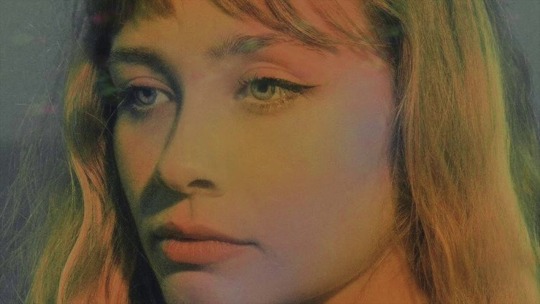
Alexandra Savior is here to pierce us all by way of melancholy as The Archer aims right for the heart
Tinged with Arctic Monkeys’ flair in spades, Alexandra Savior’s sophomore follow up to 2017’s Belladonna of Sadness, co-written with Alex Turner, is an homage to the heartbroken everywhere. And while one would think that Turner’s sound would be all over her debut, in retrospect, Belladonna of Sadness lacks his distinctive mark. Instead, it seems to appear more prominently on the new record, The Archer (a title Taylor Swift does not have the monopoly on). And just as Belladonna of Sadness was written two years before it finally came out, so, too, has The Archer long been in the works, with Savior commencing the title track in 2016.
Commenting on the notion that, during that period, in something of a Lana Del Rey parallel, she had reconciled with surrendering to the idea that she wouldn’t make music anymore, at least not at the “fame level” (just as Del Rey had bowed to while writing “Video Games”), Savior stated, “I was living with my mum and going to community college and thought that I was never going to make another record again. I was dropped [by the label] about a year after the first [album] came out. I wrote the song ‘The Archer’ on Christmas 2016.” So it was that the crux of the record was born. One that starts with the fittingly surreal and melancholic “Soft Currents.” The simple lyrics lament, “Seven years, I’ve had seven years of bad luck/And I’m just fine/Happiness I find happiness in the wrong places/Every time.” Even if that’s the case, in either her professional or personal life (more especially intertwined when one is a musician), she has ostensibly learned with time that, “My fate is at the hands of my mistakes/And that’s alright.” The ambient gloom of this acceptance segues effortlessly into “Saving Grace.”
Psychedelic to its core and filled with sweeping, overpowering guitar riffs, “Saving Grace” takes a page from 2013’s AM, on which Arctic Monkeys reached the zenith of their guitar usage, perhaps inevitably leading to the subsequent piano-favoring Tranquility Base Hotel & Casino. With lyrics that serve as a means to paint so-called Saving Grace as some sort of cruel drag queen dangling the potential for salvation before ripping it away, Savior sings, “Saving grace/Come here to petrify me/She’s not an angel, my dear/She is a beast.” In other words, do not trust her, she is a fugly slut.
And don’t trust the security of relationships for that matter, either, Savior soon apprehended after being dropped by her first label, Columbia Records. Of the “breakup,” Savior remarked, “…so a lot of the songs that I was writing before I got dropped, I was intentionally trying to impress this label that I wasn’t really suited for. When I had that freedom, it felt like I’d write the songs and they would just go into the abyss because there was nobody for me to send them to and and nobody was listening at all. But then I think that’s probably what made them a lot more personal than my last record.” So it was that she had a sort of Lady Gaga in “Marry the Night” experience, which occurred right around the same time as a romantic breakup that led to the creation of “Crying All the Time” on New Year’s Day, 2018. The moody, Sam Cohen-produced backbeat paired with the lament, “My death, it taunts me like a ship/Without a sail I know I’ll be gone soon/But just for him, I will prevail,” smacks, indeed, of a Del Rey/Turner lovechild, further compounded by the irony, “He doesn’t like it when I cry/And now he’s gone, so I’m crying all the time.”
The sultry overtone of the appropriately mating call-esque “Howl” solidifies the jilted lover theme of the record, as well as Savior’s adeptness at making spartan lyrics feel varied, with the only non-repeated verse of the song being, “Handsome dictator of my crimes/I can’t tell if they’re yours, I can’t tell if they’re mine/Sweet revelation bitter wine/I’m dreaming, but mostly I’m feeling behind.” With the fine line blurred between whether or not she’s responsible for her actions or the toxic love manipulating them is irrelevant after a certain point, and Savior must admit, “It’s a little dangerous when you come treading by me.” And yet how could we, as her listeners, not with a record like this”
The midpoint of The Archer, “Send Her Back,” persists with the laconic lyrics, the chorus, “Why don’t you send her back where she came from?” being easily applicable to both a mother after birthing her child or a boyfriend after rejecting his girlfriend of so many years. Whatever your particular interpretation as a result of your own personal situation, “Send Her Back” certainly inflicts some deep-seated feels. Of the kind that her unwitting mentor, Alex Turner, also knows too well about–not to mention how to evoke within his own listeners. As for the comparisons to their styles, let’s just say, “Can’t Help Myself,” which happens to be the sixth track on the album, opening with the sound of ambient waves washing ashore (likely a common sound when one is from the same Pacific Northwest milieu as Savior). More tinged with sardonic 60s girl group flair than some of the others, the song bears an additional tonal resemblance to the 60s stylings of Del Rey on “Radio” (as when she sings, “Now my life is sweet like cinnamon…/My body’s sweet like sugar venom, oh yeah”) and Arctic Monkeys on “Black Treacle.” Savior, in fatalistic turn, expresses, “Light dims as he walks my way/I’ve been running for a reason I could never retain/Sweet lips like pink lemonade/When he’s feeling generous he’s gonna give me a taste/’Cause nothing else can satisfy me/Oh, oh, I can’t help myself/Something comes over me, baby/Whenever you are around.”
Such a sentiment transitions seamlessly into a song title like “The Phantom,” all rife with the connotations of being haunted by the object of one’s affection. Discussing the common phenomenon in unrequited love that essentially finds one person being more of an erotomaniac than the other (e.g. “I fell in love alone”), Savior reconciles the cult-like tendencies of the one she truly believed could love her as much in return, describing with the poetic turn of phrase we’ve come to expect by now, “Fell in love as a lone disciple/His altar at the root of my fate/Fell in love on a lonely night/Could predict every word he’d never convey.”
More languorous in rhythm than the others, “Bad Disease” is peak “creepin’ on you” vibes mixed with Arctic Monkeys’ verbiage. Again imbuing her lover with cult leader status, Savior offers up the sort of images one would expect from a The Shangri-Las, The Marvelettes or The Ronettes song (and then, of course, there are shades of Del Rey’s “Shades of Cool”), boasting, “Pandemonium quivers at his touch/My preacher, my undefined creature/Consumes me.” But who cares so long as that “bad disease” she’s referring to only involves a metaphorical burning in one’s loins?
The uber groovy “But You” is Savior at her most evocative in terms of making the listener fathom her extreme loneliness in the absence of the one she loves (or loved). The best way to conjure this picture is, naturally, with a mattress. More to the point, “the wilted edge of a lonesome mattress” where once her boyfriend used to lay. No more, alas. And the one person who can heal the pain of this wound is the one person who isn’t around to do so. Oh how cruel irony can be in matters of love and all the agony it wreaks (also causing one’s own body to reek from the depression side effect of not washing on the reg).
The denouement that is “The Archer” is as meandering and dreamy as the video itself, featuring Savior roaming aimlessly along the coastline (of Port Townsend, Washington) near a lighthouse that seems useless to her. Not just because it’s the daytime, but because, from a navigational standpoint, there is nowhere she needs to be anymore now that she’s lost the port in the storm that she thought was her true love, the one who “bit [her] head right off with [his] tiny little mouth,” prompting her to “lick the blood from [his] lips.” Indeed, Savior admitted that after some reflection, “At the time, my perception was that I was writing a song about how it feels to love someone, but now when I listen back to ‘The Archer,’ I realize that I was writing an observation of a psychologically unhealthy relationship, from the perspective of someone who is unconsciously aware that she is being emotionally mistreated.” Maybe, in the end, however, if The Archer is any indication, music is both emblematic of the lighthouse and her home. Regardless of living in any (last) shadow (puppet) of certain parties that have worked with her before. Savior is very much her own musician, even if also an amalgam of so many kinds of infinite sadness as previously conveyed by some of her more obviously influencing forebears.
#took this writer a while to get to the point that alexandra is her own artist after so many comparisons to am and lana lmao#alexandra savior#the archer#review#culled culture#2020#*
5 notes
·
View notes
Text
Urban Planning: Seattle’s Cake
If you walk through Seattle’s South Lake Union, you’ll have to avoid the hordes of tech workers on break in their natural habitat outside Amazon headquarters. What many Seattleites, in particular of certain age, may not know are the proposed and now-discarded urban planning visions once proposed that litter Seattle’s annals of history. Perhaps this is merely the condition of Seattle; a city whose dreams and self-defeating hubris are larger than its stature.
Origins
In 1851, the Denny Party landed on Alki Point. Later, the majority of the settler relocated across Elliot Bay to its eastern shore to what is today Pioneer Square, selected because it was a better harbour. The remaining members of the party named the original landing point “New York”, after one of the party member’s hometown. The settlement was later renamed “Alki”, meaning “by and by” (“someday”) in Chinook jargon and underscoring the aspirations of the settlement [1].
After the Great Seattle Fire in 1889, with the wooden city rebuilt in brick and stone, the first grand planning proposal came in the form of an opera house and 12-storey tower, where fittingly, the Benaroya Hall was built in 1998. Later came proposals of an underground subway in 1906 and 1907 [2].
Bogue Plan
In the early 20th century Seattle was prosperous from the Gold Rush [2]. In 1910 the city hired the civil engineer Virgil Bogue “to take charge of the plans for the beautification of Seattle, which the commission has undertaken, paying particular attention to thoroughfares and a uniform set of improvements of a municipal character” [3].
Borrowing from Beaux-Arts in Europe as a proponent of the City Beautiful movement, Bogue proposed in 1911 capping downtown buildings in height (like Paris), radial boulevards, and city government offices located in a civic centre south of Denny Way and from where Seattle Center now sits [3]. In the Bouge Plan [4], [5] he also proposed urban rail ( for a city then expected to have a population of over one million people [6]. Of the 90 miles, 33 were proposed to be underground. Moreover, Mercer Island would become a park four times as large as Vancouver’s Stanley Park. The Bouge Plan, though approved by the city, would be rejected by voters in 1912 who saw it as too expensive and too much work [2], [3], [6].

Bouge’s Civic Center, from the Seattle Municipal Archives [3].
Seattle Commons
In 1991, Seattle Times columnist John Hinterberger and architect Frank Bassetti proposed a 61-acre central park running from Westlake to South Lake Union [2]. The plan was to transform the then low-rise, light industrial, low-income residential area to high-rise, high-tech development with a park at its centre to satisfy a city long-deficient of a green space that are not small (e.g., Westlake Park) or distant from downtown (e.g., Seattle Center). The park would rival Golden Gate Park in San Francisco, Stanley Park in Vancouver, and Central Park in New York [7].

Draft plan from 1995 (Seattle Municipal Archives) [8].
Microsoft co-founder and billionaire Paul Allen \$20 million to the Commons campaign in order to purchase 11.5 acres of land. This loan was to be forgiven if voters approved of the \$111 million property-tax levy [9]. The plan would have displaced 130 existing small businesses but was estimated to attract 12,000 high-tech and bio-tech jobs. Opponents argued that the \$250 million project would make homeowners pay \$48 a year more for nine years to subsidise developers. The measure failed twice, in 1995 and 1996 [10], [11].
Irony
Allen kept the 11.5 acres and continued to develop South Lake Union without a park [2], [11]. Jump to the present. In 2010 Amazon began to lease the properties and buildings from Allen’s Vulcan as its headquarters [9], [12]. Amazon purchased from Allen’s Vulcan the property \$1.16 billion in 2012. [13] Of course, the irony of it all is that Seattle has been unable to have its cake and eat it too. This isn’t the only example of this proverb.
In 1970 Seattle voters rejected the Forward Thrust [14] measure that would have raised \$400 million in local bonds for a \$1.3 billion regional transit system, 90% of which would have been financed by the federal government [15]. Instead, voters opted for highway and automobile-centric urban planning [10]. The 3-mile tunnel connecting the University of Washington and Capitol Hill to the 16 miles of Link light rail track to SeaTac cost \$1.8 billion alone [16].
Are the NIMBYs and anti-tax activists to blame? No, according to Dan Savage. He writes [17]:
The person at most fault for the failure of the Seattle Commons is Paul Allen. The billionaire co-founder of Microsoft asked voters to approve \$250 million in new taxes to build the park. During the second Commons campaign Allen made \$1 billion during a stock rally on a single day. If Allen had any sense—or any decent advisors around him—he would've cashed out a quarter of that day's haul and given the city the \$250 million and asked the mayor to name the park after his mother. Allen Park would've been his legacy.
That didn't happen, of course, because Allen is more carny than Carnegie. The Experience Music Project and Totally Awesome Science Fiction Stuff and Museum—what Allen thinks of as his legacy—will be a Taco Time fifteen minutes after he dies.
And, yes, Allen would've benefited from the construction of the Seattle Commons. But he was going to be benefit—he was going to make money—one way or another.
References
[1] https://www.historylink.org/File/303
[2] https://www.seattletimes.com/pacific-nw-magazine/the-seattles-that-might-have-been/
[3] https://www.historylink.org/File/9779
[4] https://archive.org/details/planseattlerepo00bogugoog/page/n5
[5] https://commons.wikimedia.org/wiki/Category:Bogue_Plan_of_Seattle
[6] https://www.seattlepi.com/seattlenews/article/The-grandest-plan-for-Seattle-6399834.php
[7] https://crosscut.com/2015/12/south-lake-union-could-have-been-seattles-central-park
[8] http://lulab.be.washington.edu/omeka/items/show/832
[9] http://pcad.lib.washington.edu/building/13448/
[10] https://crosscut.com/sponsored/walking-tour-south-lake-union-might-have-been
[11] https://www.historylink.org/File/8252
[12] https://www.seattlepi.com/local/article/Allen-displays-his-vision-for-South-Lake-Union-1171298.php
[13] https://www.seattletimes.com/business/amazon-gobbles-up-campus-for-1-billion/
[14] https://www.historylink.org/File/3961
[15] https://www.seattlemag.com/article/seattle-could-have-been-now-mohai
[16] https://www.seattletimes.com/seattle-news/transportation/university-link-light-rail-service-starts-march-19/
[17] https://www.thestranger.com/slog/archives/2012/10/06/we-really-showed-paul-allen
1 note
·
View note
Note
How would you rank the trailers for the four seasons? Or maybe ranking them isn’t so interesting, but I would love to hear your thoughts on them if you haven’t already discussed them!
Thanks for asking! So I love Julie’s trailers because they’re mini movies in themselves. They represent her artistic ambition. If I had to rank them, Isak or Sana’s would be first. Noora’s would probably be last because a dog eating vomit is gross and not something I can watch endlessly, lmao. But they’re all good in terms of communicating their season’s themes in an abstract way.Eva’s trailer: It’s the only one that has voiceover! I don’t know if maybe that’s because she’s the first lead and they wanted someone’s POV to establish the series, like it’s less exciting to have only the music when you don’t know who these people are. But also interesting is that Eva is the character whose arc revolves most heavily around not having her own opinions, and technically our introduction to Eva is her giving us her thoughts. The vibe is this version of girlhood that’s so rosy and idealized, it’s almost comical. Just girls being girls, basking in the sun, sitting in trees and swings with flowers in their hair like woodland nymphs. There’s tinkly music and soft focus as Eva tells us about how important her friends are and how they trust each other. With Ingrid and Sara, Eva’s got this happy place where she’s warm and loved. But of course we know it can’t last. There’s also this like … voyeuristic quality going on, that’s daring people to watch this picture of girlhood. Eva saying the girls kiss each other at parties, and she and Sara looking into the camera - that’s about getting your attention. All of this feels like a performance, an outsider’s view of being a teenage girl, maybe what we often see in media. It’s not real girlhood, which is not all dewy and soft, and Skam is going to show you that in Eva’s season. That’s why, imo, there are parts of the trailer that break this idealized fantasy - Sara making a vulgar gesture, and then the fantasy being broken by Ingrid talking about a picture of Eva on Instagram where she’s apparently wearing something revealing. It’s more “adult” and a transition from girlhood into teenager-hood. (Also, apparently it was Magnus who posted that picture of Eva?? I don’t know if it’s supposed to be THE Magnus but it’s a cool little detail.)Noora’s trailer: The music in this trailer is used in the season itself, so Julie must have really been a fan. Again, an idealized image. Look, it’s Noora, lying in the all-white bed, the sun spilling through the windows. Don’t we all want to wake up like this in the morning? It’s like a pleasant dream. Noora looks like she’s at peace. Until she awakes to see a naked girl in bed beside her. Clearly something she did not expect. (I don’t know if it’s actually meant to be Mari or just a random girl.) So as the music swells, just at the most triumphant part, we get the full picture of the room: people half naked and passed out, a mess of cigarette butts and half-drunk glasses, blow up dolls, vibrating dildos, a dog eating someone’s puke. Decidedly not a peaceful, idealized scenario! Some shit went down last night. Noora is horrified. She checks her body until the covers, and I mean, I’m assuming she’s wondering if she’s had sex, or got up to something that she’d regret, and she must think she didn’t because she seems pretty satisfied. Until William comes in, posing like a model and looking like he’s enjoying the view. He’s probably the last person Noora wants to catch her in this compromising position.There’s obviously some direct foreshadowing to Niko’s party and Noora’s assault in the trailer, down to the music. But it’s also about Noora’s relationship with sex, and her self-image, and how Noora is this very controlled person - she doesn’t drink because of what it does to her, she won’t have sex because of how a bad experience affected her. And she’s in this rosy, safe place until she’s suddenly in this very non-Noora situation where debauchery is all around her. She doesn’t know how she got there. Then of course there’s William - Noora doesn’t really want him to see her like this, but William is going to be the one to meet her out of her comfort zone, where she’ll have to deal with these messy emotions and reconsider her careful attitude. S2 has to do with Noora dealing with a loss of control - both with her falling for William against her judgment, and with the aftermath of her blackout. (Interestingly, Noora is the only lead who doesn’t look into the camera for her trailer. She’s not daring the audience to judge her or take in her performance - Noora really doesn’t want to be seen in her situation, I think.)Isak’s trailer: I once read a really great analysis of Isak’s trailer and I don’t think I could do as much justice as that one (I can’t remember where that analysis was right now, sorry, if anyone knows feel free to leave the link) (ETA: @heihallohadet sent me the links to ravenclawisak’s fantastic trailer analysis, please read part 1 part 2), but here goes. Obviously we have boys messing around in their underwear, splashing water on each other. William gets a tease at the start since people wanted more of him and Noorhelm post-S2 and Julie likes teasing her fans. This is like the gender-flipped version of Eva’s trailer, in some ways? It’s a romanticized version of teenage boys. Well … by “romanticized” I mean “sexualized.” Like, this is a fantasy. It would not be out of place if you stuck a Sean Cody logo on the frame. We have these male characters scantily clad and wet. It takes us about half a minute to see Isak, like oh, he’s here, too. He’s not a participant, but an observer. And he seems to be torn about it. On the one hand, he’s intrigued by the view, he can’t look away. On the other, his body language is awkward and uncomfortable, like he knows he should look away. He quietly observes the strapping male bodies before looking down. Then it’s Jonas who grabs the milk - fittingly, Isak’s first crush that we know of - and throws it, and Isak doesn’t do anything as it comes his way. He doesn’t get up or dodge, he just watches the milk soar over his head and then rain down on him. He lets himself feel it on his face. And you could read into his expression several ways, but to me, he choose to let the milk hit him. Like … he seems kind of rapturous for a moment there. So he’s choosing to indulge in these forbidden feelings, because he wants them even if he can’t act on them. Then he looks into the camera straight at us. With Eva it felt like she was teasing us when she looked into the camera; this is like Isak is daring us to judge him. (I remember this from the other analysis, so I don’t want to take credit for it, but they brought up that the other boys are dousing each other with water, a clear liquid, and Isak gets hit with milk, something that leaves a stain, and it’s like the other boys can frolic around in this homoerotic scenario and not have it mean anything, because they’re straight, but with Isak, his attraction to boys is something that would mark him. Isak is othered in this trailer, by the milk and simply by sitting on the sidelines instead of messing around with the others.)What really gets me about this trailer is the song. I LOVE this choice of song. It’s Nils Bech so of course he’ll represent Isak further on the S3 soundtrack, as it turns out, but also … those lyrics. The LYRICS. There’s just so much fucking longing. Again, Isak is othered: “I am the last one” - he’s the one who can’t find love, or romance, because he can’t get it from the same place as the other boys, and it’s something he’s locked up inside. “Everyone knows how I tried” - Isak tried to do the heterosexual thing, he tried to date girls. But what he’s longing for, in his secret romantic heart, is a real connection with someone he truly likes. “What’s so strange about me”- again, feeling othered, not knowing what to do with this part of himself. “Can’t I be loved” - evident, despite his other-ness, he wants that genuine love. Why can’t he have what the other boys have? Is there someone who will want him the way he wants? Goddamn, this song gives me stomach pangs. The loneliness, the vulnerability. It makes me so grateful for Isak’s season.Sana’s trailer: AKA the one everyone spent months waiting for. I love this one, either S3 or S4 is my favorite. Now, I will say that this trailer probably altered a lot of fandom’s expectations in a negative way - because we spent so much time waiting for the “clues” to pay off, and reading into it, that some aspects disappointed when they did or did not happen. But as a standalone, I think it’s awesome. First of all, because the music is in reverse, Julie prevented the international fans from being geoblocked, so that was cool, lol. Second, again, AMAZING choice of music. I mean frankly, a lot of people would hear this trailer and think, “OK, this is something Middle Eastern? It sounds … vaguely foreign.” But of course it’s not, it’s actually a song in English played in reverse. And not just any song, but a song where the speaker begs the listener not to misunderstand them. Where they acknowledge that they’re not perfect and that they make mistakes, but “I’m just a soul whose intentions are good.” Don’t judge them, understand them. And that’s completely Sana’s character in S4. She’s dealing with so much, people judge her, things go wrong, and that results in her making bad choices. But Sana is not a bad person. Sana is someone who wants to do good, but sometimes makes mistakes. We don’t understand the song because it’s in reverse, but play it forward and the lyrics become clear. It’s fantastic. There’s the bonus layer of the song being by Yusuf Islam, formerly known as Cat Stevens, who converted to Islam in the ‘70s.Moving on to the visuals, of course we have Julie messing with her fans again by showing Even first, as post-S3, many fans were calling for an Even season just as fans wanted a William season post-S2. She gets in that lovely little Evak moment before moving through the girls backwards. A chain reaction that causes chaos. There were so many damn theories about this trailer. Even gets hurt by getting hit with the selfie stick - was social media going to bite him in the ass? Chris has the selfie stick; she hits Even because Eva knocks into her; Eva knocks into her because she trips on Vilde’s pearls (Eva has a beer in hand, would her drinking come into play? Would she trip and “fall” for Vilde, as the Evilde shippers hoped?); Vilde’s pearls scatter because Noora falls against her and grabs the necklace (was Noora going to fall for Vilde? Were Vilde’s pearls broken as a sign of her poor home life coming to light?); Noora falls against Vilde because Sana trips her. All those people fall down because of one deliberate decision by someone we don’t expect to cause trouble, who is known for being the rational, loyal friend. What’s more, Sana smiles about it. Why is she smiling? She wants to cause trouble? What has motivated her to do this? And it all leads to blood.So the chain reaction didn’t play out quite like we predicted, in the end: for example, it’s Isak who gets hit in the face, not Even, the “reverse” of the situation. But not gonna lie, I’m not totally clear on how the rest of this chain happened, like I know how Sana’s actions ended up affecting the other characters and causing a chain of problems like Vilde getting cyberbullied, or Isak getting blamed for the hate account. To be fair, the trailer is not necessarily supposed to line up exactly with the events of the season - it’s just general foreshadowing about Sana making choices that affect others, and about the theme of being misunderstood. Taken on its own, I adore this trailer, I think it’s got a terrific concept, and Sana gives me chills at the end.
23 notes
·
View notes
Video
youtube
ITZY - DALLA DALLA
[6.56]
The most views for a K-pop debut ever, but are they our new fave too?
Jessica Doyle: Well, it's the second reincarnation of 4Minute's "HuH" to emerge in two weeks, albeit with more musical ideas than the first try. The nods to constant surveillance in the video are worth a few thoughts, I suppose. It's hard to get excited about a debut with the refrain "we're different, we're different" when my first response is, "Well, if you mean 'we don't group-shout as well as Twice eonnis,' then sure." [4]
David Moore: Itzy grab a shard of a Hailee Steinfeld song and build it out again with frills and squiggles and rah-rah, hip 'cuz it's square. I don't know about the empowerment in the messaging (drippy from what I can tell -- "Keep your head up! Keep on dreaming!"), but the clatter and clutter in the sonics is its own sort of liberating. [7]
Alfred Soto: The grime motifs, mostly the distortions, and the rhythm changes work as ends in themselves, yet Itzy insist on adding, "I love myself." Damn straight. [7]
Thomas Inskeep: A refreshing change of pace in girl group K-Pop: "Dalla Dalla" translates as "Different Different," and these five women are proudly proclaiming their difference/s and independence. Fittingly, the track is hard electropop -- think Skrillex's first flirtations with pop -- with rap breaks folded into the batter, and Itzy sells it; their delivery matches their lyrics. Is this the start of a new era for girl group K-Pop? Dunno, but one can hope; this is a fine start. [8]
Nicholas Donohoue: There is the idea of fusion genre, a form of flattening some disparate elements in two or more genres and accentuating more friendly and harmonious elements to create an interesting and less off-putting product and style. You could call "Dalla Dalla" a fusion, but a more apt description might be patch job. The rate at which it shifts from its baseline to a more hard-edge hip hop, then to pure pop sweetness, then to cheer squad, then back to its baseline, makes it hard to consume because it never gives itself time to appreciate a feeling. [4]
Stephen Eisermann: Bubble-gum pop, but electric is a genre I didn't know I needed. The ladies of Itzy sound confident, assured, and like they're having a blast while singing to this song about how different they are. I'm not sure that I buy that they're that different than most K-Pop girl groups, but they certainly seem like they're having more fun. [7]
Joshua Minsoo Kim: Consider me floored: not since Weki Meki's "I Don't Like Your Girlfriend" has a K-pop single featured audacious genre-blending that played a crucial role in driving home its lyrics. In thinking about why "Dalla Dalla" works, I kept coming back to Why Don't We's "Something Different" and Hailee Steinfeld's "Love Myself." The former is a relatively anonymous boy band track that fails to impress because the group is too underdeveloped to have any recognizable personality; you can't convince listeners of your individuality when your music doesn't have any. The latter is a self-love teen pop anthem that succeeds because its chorus is a blaring wind tunnel that invites listeners to scream its "I love myself!" mantra without fear of anyone listening. Itzy combine the two ideas and sell it by going full girl crush concept; they encourage others to love themselves by flaunting their own uniqueness. Realistically, Itzy are too new to be understood on a quasi-personal level, so this methodology circumnavigates that issue with ease. There are flashes of early 4Minute and 2NE1 here (that "no no!" is a dead ringer for the latter), but the gimmick-free trap breakdown situates "Dalla Dalla" in a post-"BBoom BBoom" 2019. When the song begins, an elevator bell is heard to catch your attention, and it leads into a series of dubstep wobbles -- less "Bubble Pop" than "Night," though. Out first impression of these girls is that they're fierce, but it's only fully realized when they return to that sound after a bubblegum chorus. "I love myself!" they chant, and it's done with such fervor that one can't imagine a time when they were ever reluctant about declaring it. The bridge finds them explicitly extending their arm out, becoming cheerleaders for those who are afraid to express themselves. While their hopeful messages to "Keep your head up!" and "Just keep on dreaming!" would be enough on their own, the elastic tug of the beat embodies just how dead-set they are in ensuring your breakthrough. Incredibly, the final chorus returns to this exact beat, as if to announce that this -- this level of palpable confidence -- is something you could achieve. They exit with a final elevator ding: a cocksure grace note that serves as a reminder that one day, you might actually get on their level. [8]
Alex Clifton: The production on "Dalla Dalla" is disparate and messy, but it also... kind of works? I have no idea what's happening here. We go from 2NE1-style rap to a sugar-sweet chorus that rivals "Russian Roulette" to a screaming bridge that recalls Twice for some reason and I can't say any of the transitions are smooth, but it definitely stands out. Intellectually I think this is too jumbled for me to really call this a song I like, but I played it three times in a row trying to puzzle through it and I found something new and weird in each listen. It's not straightfoward in the slightest, but I do like maximalist bonkers pop songs, and I can't say that "Dalla Dalla" disappoints in that respect. [5]
Iris Xie: I get chills when I hear the instrumental shift into a sudden seismic snap at 1:50, with Yeji yelling "My life! I will live my own life! Don't you care!" The production disorients the listener and forces them to enter her defiance spatially for a split second -- her voice echoes in sharpness and the bass drops incredibly low, resulting in a bouncing effect that encloses you in the sudden sting of her defiance. Despite teen pop being in existence forever, I have never heard an accurate, sonic portrayal of what it is like to be an sassy, angry, defiant teenage girl that is absolutely fucking sick of people dictating how she is supposed to be, and pushing back hard with a cathartic forcefield fed powerful by the strain of expectations, all the while without putting down other girls. The intensity of that drop alone already sets this song above so much teen pop I've heard before. In addition to this, the 17-year-old me is so completely envious that this song only exists now in 2019. Back in 2009, the main active girl group I was aware of was The Pussycat Dolls, and funny enough, "Dalla Dalla" sounds like the more sophisticated little sister to "When I Grow Up." In their DNA, they both have the haughty and ambitious vocals, intricate but pumping flourishes, incessant warped synth and vocal hooks, and a stomping demand to be admired and taken seriously. But in contrast to "When I Grow Up," which serves as an aspiration to be admired sexually by men and a devotion to the attainment of fame, both which reinforces of PCD's "tough, sexy unnies" image, "Dalla Dalla" takes the breezy assertiveness and focuses it on a joyful, lush, and punky self-love, serving as a model for other teens to take strength in their brash and unapologetic confidence. The girls don't give a shit whether you find them attractive, their presence is not for your comfort or consumption. From a pop perspective, this song also glosses and refines the experimentation that we've heard before in other k-pop songs, like the mashup of styles for SNSD's "I Got a Boy,"while adding sorely needed complexity to other usual boring takes on self-love. The part at 1:42 is astonishing, because it fixes all the problems with Momoland's "Boom Boom" mid-track interruption, by not overstaying, and using it to prove a point, "I'm not sorry I'm bad!" which hints at the agency of a young teenage baddie's socially transgressive agency. That descends into the aforementioned snap of "My life!" that drops into bouncing minor chords for just a second, before resuming their cheeky, bright energy. We hear that again in the bridge of "Keep your chin up! We got your back!" The vocal overlays are such a powerful way of amplifying both a positive self-thought while also giving the sensation of girls cheering on other girls, which is sorely needed representation in a world replete with examples of competitive, internalized misogyny. Overall, this song moves me, simply because I can just join in and yell without hesitations because "I really don't care!" without having to think twice. (well, not completely.) [9]
[Read, comment and vote on The Singles Jukebox]
1 note
·
View note
Text
Tropes of Toxic Masculinity in the Male “Heroes” of Buffy the Vampire Slayer
“It's terribly simple. The good guys are always stalwart and true. The bad guys are easily distinguished by their pointy horns or black hats, and, uh, we always defeat them and save the day.” Rupert Giles says this faciously to his charge, Buffy Summers, at her request for him to lie to her about how easy her life as a slayer will one day come to be, in the seventh episode of the second season of Buffy the Vampire Slayer fittingly titled “Lie to Me.” The term “guys” in this context, by the time the episode was written and premiered in 1997, was meant and understood to be gender neutral, but put into the larger context of the series as a whole could easily be limited to “guys” in the traditional, masculine sense. In Buffy, it is men’s actions that are most often morally ambiguous, with few exceptions. Even more, it is the men who fight beside Buffy in the battle against evil whose actions hurt her the worst, Giles included. Each of the male “heroes” in Buffy the Vampire Slayer illustrate the different shades and extremes of toxic masculinity by exemplifying an inherently flawed trope. Each of them, in accordance with their corresponding trope, take choices away from Buffy and cause lasting psychological damage with ranging degrees of acknowledgement from both her and/or the narrative. In this paper, I am going to scrutinize the three who were introduced early on and stayed through to fight the final battle alongside Buffy: Giles, Spike, and Xander.
Let’s start with the character that has been previously mentioned, Rupert Giles, typically referred to by both characters and fans alike simply as “Giles.” Giles is introduced in the pilot episode, titled “Welcome to the Hellmouth,” as a “Watcher” for Buffy (see figure 1). He has been assigned to her by the Watcher’s Council, an age-old organization dedicated to the elimination of vampires and demons from the Earth, to prepare and assist her in the fight against evil-essentially being the brains to her brawn. As the series goes on, however, Giles’ role in Buffy’s life transitions from that of detached supervisor and is built up to fulfill that of the Father Figure trope. Buffy’s own father is divorced from her mother and is never seen again in a non-dream sequence after his second-time appearance in the premiere episode of the second season. The creator of the series, Joss Whedon, admitted in an interview with the New York Times that this phase out had a relevant purpose: “It’s true that Buffy’s father started out as just a divorced dad and then turned into this sort of "evil pariah" figure of not even bothering to show up, and that was simply because we had a father figure in Giles…”
Giles’ attachment to Buffy as a surrogate child rather than simply as his trainee arguably first gets shown to the viewer in the season 1 finale entitled “Prophecy Girl.” Giles has come across a prophecy that predicts her death at the hands of the current Big Bad, the Master, and Buffy overhears him telling her love interest Angel about it so that they may form a plan without her. “Read me the signs! Tell me my fortune!” she yells, throwing his books at him (see figure 2). Buffy’s knowledge of her destiny since the pilot has been filtered through Giles, who struggles to serve his dual roles of both Watcher and father figure. In his role as the latter, he withholds information from her that he learned in his service to her as the former, and acts on his own instead in order to protect her. This will be the crux of their relationship throughout the series, and feminist scholar Gwyneth Bodger feels it is emblematic of a larger issue,
Indeed, he acts as a substitute father for Buffy, and it is here I would argue that the series departs from a feminist ideology. As a powerful figure in the series, Buffy has the potential to become the figure of the unruly or disorderly woman. In order to prevent this, she must be "owned"; her power must be channeled and controlled by a man, in this case, a father figure..
Fast forward to season three, and Giles’ role as father figure becomes explicitly textual in two episodes in particular: episode six, “Band Candy,” and episode twelve, “Helpless.” In “Band Candy”, Buffy returns home from visiting Angel to find Giles and her mother, Joyce, angry that she lied to them both that she would be with the other, rather than Angel. The mise-en-scené clearly indicates that Giles and Joyce are a united front in the way any functioning pair of parents would be (see figure 3). Later, in the same episode, having been placed under the influence of magical chocolate bars that revert them back to their teenage personalities, the two sleep together. In doing so, Giles-if only temporarily; this is the only time that he and Joyce sleep together-officially takes over all “fatherly” duties in the Summers household. Buffy is disgusted when she finds out they had sex, but only to the extent any teenager would be to discover their parents’ sex life.
In “Helpless,” just as Buffy’s birth father betrays her by missing her birthday, Giles betrays her by removing her powers for a Watcher’s Council ordered test that has historically been conducted if a slayer reaches her eighteenth birthday. Even more devastatingly, he does so right after Buffy asks him if he would like to take her father’s place in their now broken birthday tradition. He soon comes to his senses when Buffy is nearly killed by the vampire who escaped the Council’s control, but it’s far from enough to immediately salvage their relationship. “You poisoned me!” she cries, wrenching her arm from his pleading grasp, “I don’t even know you.” It is only when he arrives to help Buffy save her mother from the same vampire as earlier, and the head Watcher points out what makes Buffy and Giles’ relationship unique - “Your affection for your charge has rendered you incapable of clear and impartial judgment. You have a father's love for the child, and that is useless to the cause.” - that fences are mended, symbolically shown by Buffy allowing Giles to help clean her wounds (see figure 4). His role as father figure has been reinstated, as well as reinforced. In the same swoop, Giles is kicked out of the patriarchal Watcher’s Council, which as Buffy scholar Ian Martin puts forth in his video guide for the episode, “is symbolic of him no longer being a contributing member of the patriarchy. He disobeyed a direct order. He broke with tradition.” However, it is Martin’s next words that are haunting: “While they have appeared to have reconciled by the end of the episode, Giles’ betrayal represents a sobering loss of innocence here for Buffy, tied to her actual father ditching her at the beginning of the episode.”
The next two seasons primarily serves to build their relationship further, but are not without their caveats. In the ninth episode of season four, while Buffy is under a spell that compels her to be engaged with her tenuous ally Spike, she asks Giles if he would walk her down the aisle. Initially Giles is touched by her request, but after a moment snaps back into the reality of the situation and dismisses it, hurting Buffy in the process. In the sixteenth episode of season five, when Joyce dies from an aneurysm, it’s Giles that Buffy leans on for support. In the eighteenth episode, Buffy tells Giles “I love you,” for the first time. However, by the next episode, Giles becomes concerned that Buffy is coming to depend on him too much, to her own detriment, and begins to withdraw. Yet, if Giles were to listen to and respect what Buffy was saying, he would realize that’s not what she needed. Joyce’s passing heaped even more responsibility on her shoulders-raising her little sister Dawn and maintaining a house-so what she needed was someone to share the responsibility she was drowning under with someone she trusted and looked up to. Someone like a father figure.
This dilemma would be picked up mid-season six, after Buffy’s friends had wrenched her out of heaven and back to a “loud and violent” life. In an episode filled with stylistic exhibitionism, “Once More with Feeling,” Giles sings a song that betrays his feelings on the matter: “I wish I could say the right words to lead you through this land, Wish I could play the father and take you by the hand, Wish I could stay, But now I understand, I'm standing in the way.” At the end of the following episode, he departs to England for the rest of the season, leaving Buffy to fight her growing depression and duties alone.
Giles returns at the end of season six and mostly remains for the rest of the series, but enacts one last, glaring betrayal. In the seventeenth episode of season seven, appropriately entitled “Lies My Parents Told Me,” he distracts Buffy while elsewhere one of their new allies attempts to kill Spike, who since “Something Blue” Buffy has grown to trust and have complicated feelings for. It’s the equivalent of a shotgun-toting father facing off against their daughter’s new boyfriend, only Giles would have gone through with it. Giles also has a rather misogynistic outlook on Buffy’s motivations, believing that Buffy’s protection of Spike must be driven by her emotions despite her logical insistence that after her Spike is the best warrior they have on their side. Buffy realizes what Giles is doing, the assassination attempt fails, and Buffy literally shuts the door on Giles in her life as a father figure as she says, “I think you’ve taught me everything I need to know” (see figure 5). Buffy no longer wants or needs Giles to lie to her, regardless of the place of fatherly love those lies stem from.
Spike, of course, is far from innocent either. For the sake of brevity-Spike has more academia written about him than any other character in the series minus Buffy herself- I will be focusing on Spike’s place in the fifth and sixth seasons in which he fulfills the trope of “The Suitor.” The fifth season is when Spike really becomes a part of Buffy’s team and starts to get close enough to her that he can hurt her emotionally, when previously all they were presented as feeling for each other was animosity. He realizes that he’s in love with her at the end of the fourth episode of that season, and so his role as The Suitor begins.
Spike, formerly known to human society as William Pratt, was turned into a vampire in Victorian England in 1880 at 27 years old. The ways in which Spike goes about trying to earn Buffy’s affections throughout season five parallel a twisted version of the courtly love sensibilities that would have been popular when he was turned, even if the term itself had not yet been coined. In her scholarly article, “‘Ain’t Love Grand?’ Spike and Courtly Love,” Victoria Spah outlines and describes exactly what this means:
The term "Courtly Love" is used to describe a certain kind of relationship common in romantic medieval literature. The knight/lover finds himself desperately and piteously enamored of a divinely beautiful but unobtainable [sic] woman. After a period of distressed introspection, he offers himself as her faithful servant and goes forth to perform brave deeds in her honor. His desire to impress her and to be found worthy of her gradually transforms and ennobles him; his sufferings—inner turmoil, doubts as to the lady's care of him, as well as physical travails—ultimately lends him wisdom, patience, and virtue and his acts themselves worldly renown… Like any intricate allusion, references to the various pertinent aspects of the mythos (which itself has no definitive version) are woven subtly throughout without heavy-handed complete correspondence. Spike and Buffy are after all modern characters and as such must retain the psychological depth lacking in medieval stock characters, and thus their story is not informed solely by the Courtly Love tradition. The correspondence, ironic and teasing at times, straight-forward at others, is however quite fascinating and worth further examination.
The first stage of courtly love is, “Attraction to the lady, usually via eyes/glance.” The actor who played Spike, James Marsters, has stated in multiple interviews over the years that, “As an actor, I right away played an attraction to Buffy.” In his first episode, “School Hard,” Spike stalks Buffy, watching her dance at the Bronze and then having her fights secretly videotaped so that he can study her moves (see figure 6). Even these early scenes have, as Marsters himself admits, “a heavy sexual undercurrent.” The watching of the videotapes in particular is inherently voyeuristic, and presents a modern take on how “glance” and gaze has changed since the middle ages.
Getting back to the focus on season five, the second stage is, “Worship of the lady from afar.” After Spike realizes he’s in love with Buffy, it quickly turns into an obsession. He lingers outside Buffy’s house, chain smoking cigarettes and watching at her bedroom window. He sniffs her sweaters when she isn't home. He rehearses conversations with her on a look-a-like mannequin that rapidly turn violent when he anticipates her rejections. He even has a “Buffy shrine” dedicated to her, filled with pictures and sketches of her, her sweater that he stole after he sniffed it, a bloody gauze that was used to bandage a severe stab wound she recently got, and multiple of her stakes. Buffy is disgusted and horrified by this when she comes across it in the episode “Crush.” Her keen sense of violation is made clear when she punches Spike across the room and into the shrine, destroying it (see figure 7). It’s a beat that summarizes the worst of their relationship in these two seasons in a single snapshot: Spike sees Buffy as an object of worship that with enough prodding he can bring down to his level, but Buffy destroys that dream every time.
The episode “Crush” is a major one for their relationship, as it is when Spike reveals his feelings to her for the first time in accordance with the third stage, “Declaration of passionate devotion,” as well as the fourth stage, “Virtuous rejection by the lady.” Spike makes these declarations twice in this episode, but after Buffy rejects him the first time he makes the second one bigger, grander. He chains her up while she’s unconscious and makes an oath to either stake his sire/ex to prove his love for her, or let his ex kill her if she doesn’t admit to feeling something in return. He’s performing, putting on a show in anticipation of completion of the fourth stage. Even he knows that doing this is not the way to get Buffy to change her mind from her previous refusal. He’s taken it upon himself to move her from passive object of desire to active participant in the courtly ritual. It’s another example of him violating her agency and sense of self.
After this episode, Spike takes a turn for the better for the rest of the season. He does one last disgusting, literally objectifying thing-having a likeness of Buffy made in the form of a sex robot-but before the end of that same episode is willing to be tortured and killed before he would give up information that would lead to Dawn’s death. Spike proves with word and action multiple times before the season ends that he would be willing to die for Buffy, thus completing the fifth stage, “Renewed wooing with oaths of virtue and eternal featy.” For his trouble, Spike earns the knightly favor of exactly one kiss from Buffy before she dies in the season finale, arguably completing the sixth stage, “Heroic deeds of valor which win the lady’s heart.” However, it is worth noting that with that kiss, Spike’s redemption, or lack thereof, officially becomes yet another of Buffy’s responsibilities.
Spike’s role as “The Suitor” shifts in season six, after Buffy comes back from the dead. Courtly love has been completed, but not to any great satisfaction for him: Buffy still doesn’t love him. Per her depression, she doesn’t feel like she can love anyone, let alone a vampire without a soul regardless of his recent good deeds. Every sexual advancement that occurs between them stems from Buffy’s pain-of being torn out of heaven, of depression, of Giles leaving. Their sexual relationship for her is a form of self-harm. On Spike’s side, the first time they have sex is after they realize that Spike can hit her again, despite the government chip in his head that prevents him from hurting people. Courtly love is inherently aspirational, about being devoted to a woman who is unquestionably above you. When Spike’s ability to hit Buffy returns, Spike sees them returned to the equal playing field they had before he fell in love with her, and so turns into an abusive boyfriend kind of suitor rather than the virtuous knight he strived to be previously. Not only does he abuse her physically, but he also equips the classic abuse tactic of attempting to separate the victim from their loved ones, telling her that she belongs in the dark with him instead of dancing in the light with her friends (see figure 8). This all culminates in the nineteenth episode of season six, “Seeing Red,” in which Spike attempts the ultimate betrayal and taking away of a woman’s choice: trying to rape Buffy.
Spike goes to Buffy’s house after she’s put an end to their sexual relationship to try to get her back, while Buffy has been put through an ordeal that significantly weakens her. He forces himself on her despite her protests in the hopes of “getting her to feel it [love for him],” and then snaps out of it, disgusted with himself, when she manages to kick him off. As Buffy scholar Lani Diane Rich puts it in her video about the episode, “Spike is horrified by his own behavior and that’s good, he should be, but it doesn’t do anything to mitigate Buffy’s experience here...the shock and horror of that experience is something you carry with you always.”
Spike’s self-disgust leads him to a cave in Africa, where he endures a series of trials to earn, the viewer is led to believe, his greatest wish: the chip out of his head. In a moment of narrative spectacle in the season finale, however, the viewer is shocked to learn that it’s not the ability to hunt humans again that is Spike’s greatest wish (see figure 9). It’s getting his soul back, so he can, as he puts it, “give Buffy what she deserves.” In the established mythology of the series, the souled and unsouled versions of an individual are in many ways separate entities, with individual desires. Spike fighting for and earning his soul is akin to committing suicide so that a better version of him, a version more genuinely selfless and caring of Buffy’s needs, may rise from the ashes. The Suitor, both knightlike and abusive, is dead.
There’s a male character left in Buffy’s life who doesn’t face the consequences of his toxic actions the way Giles and Spike do: Xander Harris, the Best Friend. To be more specific, the “friendzoned” best friend, particularly in the first two seasons. When the viewer is introduced to Xander in the first episode in the series, it is immediately made apparent that he has a crush on Buffy, and equally made apparent she doesn’t reciprocate through her budding attraction to Angel. Yet, Xander continues to go forward with his feelings anyway. In S. Renee Dechert’s essay, “‘My Boyfriend’s in the Band!’ Buffy and the Rhetoric of Music,” Dechert describes a fantasy Xander has in the fourth episode,
As Xander dusts a troublesome vamp at the Bronze, an enraptured Buffy watches. After the fight, she exclaims, “You hurt your hand! Will you still be able to…?” “Finish my solo, and kiss you like you’ve never been kissed before?”... Then he jumps onstage and whips out a Hendrixesque guitar solo while an awed Buffy looks up at him. (The camera angle further empowers Xander here, shooting up at him as he stands above the crowd, the light outlining his phallic guitar and empowered-and fashionably dressed-body.) (see figure 10)
To Xander, the perfect fantasy is him being the empowered in their relationship in all masculine senses of the word-most relevantly, being the only man in Buffy’s eyes.
In the sixth episode, when he is possessed by the spirit of a hyena, his feelings are twisted into an animalistic form that prompts him to sexually assault Buffy. After the spirit has been removed from him, he pretends that he doesn’t remember his experiences while he was possessed, and Buffy never finds out he’s lying. In the first season finale, when he works up the courage to finally ask her out and she gently rebuffs him, he lashes out, “I guess a guy’s gotta be undead to make time with you,” but the narrative makes clear we are supposed to empathize and pity him for it, not resent him. In season two, in the episode “Surprise,” Xander details a whole revenge fantasy in which Buffy gets her heart broken by Angel, only to be saved by Xander. Again, it’s played off as a joke. Three episodes later, Xander uses magic to make his ex infatuated with him so he can reject and humiliate her, but it backfires by having all the women of Sunnydale, including Buffy, be infatuated with him instead. The narrative actually has Buffy earnestly thank Xander for having the “strength” and “self-control” not to rape her. Finally, in the season two finale, Xander is sent by the rest of the Scoobies to tell Buffy on her way to fight a now soulless Angel that Willow has discovered a way to restore Angel’s soul. Yet, he takes it upon himself to instead tell Buffy to “kick his ass,” giving Buffy no hope of any alternative to killing the man she loved. In the scholarly article, “‘Jimmy Olsen jokes are pretty much lost on you’: The Importance of Xander in Buffy the Vampire Slayer,” the author presents a perspective I’ve never before considered, “Xander doesn’t deliver the message in favor of disseminating more violence… Angelus was very powerful, but Xander decided that Angel’s death was more important than Buffy’s safety.” It’s the peak of male entitlement-the death of the competitor is more important than the physical and emotional wellbeing of the woman sworn to be the beloved.
Willow does restore Angel’s soul, just a moment too late, and Buffy is traumatized by having to kill the man she loves while he is the man she loves. If Xander had told her the truth, that information could have spared her from that. His role in Buffy’s trauma only gets brought up one time, five seasons later, and even then goes barely acknowledged (see figure 11). So why does Xander get to go scot-free from consequences? Cast and fans alike have posited that it’s because he’s a self insert for Joss Whedon himself.
For years, Buffy creator Joss Whedon was hailed by nerd culture as one of the leading male feminists in Hollywood. Then it was confirmed that he seemed to fire one of the actresses on the Buffy spinoff, Angel, for getting pregnant. Then Avengers: Age of Ultron got released, which featured an unfortunate scene in which Black Widow refers to herself as a “monster” because she is infertile. Then his misogynistic, stereotypical Wonder Woman script got leaked. Then his ex-wife published a letter condemning his years of infidelity and emotional abuse. And then, and then, and then. Just like Buffy experienced, oftentimes it is those who fight besides us, the ones who we feel we can trust, that hurt us the most. Perhaps our believing this time would be different was just our desire to be lied to.
@andieb4650
22 notes
·
View notes
Text
Endeavour Series 8 Episode 2 Review: Morse Haunted by Ghosts of His Past
https://ift.tt/3hrk0u1
Endeavour Series 8 Episode 2: ‘Scherzo’
Warning: this Endeavour review contains spoilers.
For those of us who don’t share Morse’s musical bent – and we’ll be due a snooty glare from our man Endeavour, as his wicked(ish) stepmother Gwen (Lynda Rooke) would no doubt be the first to warn us – a word on that episode title is needed. A scherzo’s a movement in a symphony or sonata distinguished by its light, playful tone. Bit of fun on writer Russell Lewis’s part, surely? Well, yes and no.
‘Light’ and ‘playful’ aren’t words we’d always associate with Endeavour, especially in the current series, with its bitter echoes of the grief and disillusionment left by a death in Venice. Yet ‘Scherzo’ begins fittingly enough for a comic opera, with scenes that are more reminiscent of HBO’s recent drama The White Lotus. Playful music (composer Matthew Slater nails this episode’s thematic, as well as visual, light and shade, in concert with director Ian Aryeh); acid colours more at home under a tropical sun than beneath dreaming spires; a hotel manager whose professional smile might mask private troubles. You won’t be surprised to hear that both shows feature a murder. Several, in this case. You will, however, probably raise an eyebrow on learning that this week’s Endeavour, like The White Lotus, involves quite a bit of nudity.
It’s Strange, inevitably, who’s confronted with sights a little more…let’s say, natural, than he’s used to when he arrives at a nudist hotel to interview its guests about the murder of a taxi driver. The dead man, shot through the head by someone in the back seat of his cab, is found in the abandoned vehicle down a country lane nearby. DeBryn is, for once, holding rather a late post mortem; he has an altogether more pleasant dissection to enjoy first over lunch. (Don’t worry, it’s only The Eagle’s finest pie. Nice to hear somebody’s fun remains unspoilt, at any rate.)
Read more
TV
Endeavour Series 8 Episode 1 Review: the Inspector Morse Transition Begins
By Gem Wheeler
TV
Endeavour: Why Isn’t Fred Thursday in Morse’s Later Life?
By Louisa Mellor
Morse spies a finished crossword by the victim’s body and feels a brief tug of kinship. Not for long, mind you. An ex-wife and alienated little boy, a new missus who’s the last in a long line of extra-marital conquests, and colleagues who remember his gambling streak: this bloke really isn’t Morse’s cup of tea. It’s the first in a succession of mysterious deaths that will lead to a seamier side of Oxford life, far removed from the Carry On frolics of the naturists’ haven cheerily run by Major Jones (Andrew Woodall). As ever, Morse and his colleagues will have to get to the bottom of a rapidly thickening plot. Lots of people end up being interrogated in this episode about secrets they’d rather not share. My favourite was Lee Timothy (Shadrach Agozino), one window cleaner who won’t be confessing to anything, thanks very much.
This eighth series is plagued by unwanted ghosts, yet the vision that alights on Morse’s doorstep is brought there not by a phantom coach but by a taxi from the dead man’s own firm. It’s Gwen, Morse’s much unloved stepmother. Caught between moves, she has nowhere else to go, and she and her embittered stepson are just going to have to muddle through their odd-couple arrangement for a few days. Endeavour retreats into teenage sulks and moody silences, while Gwen chides him for what she sees as his class-bound disloyalty to Morse père: himself a taxi driver, in case we’d forgotten.
It all comes out, of course – Morse’s lost mother, abandonment, blame. “I didn’t kill her,” Gwen blurts out in a climactic row. Morse looks at her in shock, as if this most perceptive of men has never quite twigged why he’s hated her until now. They’ll never be reconciled, of course, locked in their own grievances. The family alternately proud and terrified of an Oxford-bound son whose desire to distance himself stings more than they’d ever admit. The lonely kid turned withdrawn man who, somewhere, must long to be just one of the boys. You wonder, treacherously, whether he might have been better off with someone like Gwen: someone to puncture the bubble, the kind of woman who could shatter a wall of silence with the right word. But this is Morse, for whom love and suffering are synonyms.
Speaking of which, Joan and Strange are getting closer. (I saw it coming. No, I did.) Whether Joan will be able to set aside her sense of social justice to consort with a dutiful member of the Masonic Lodge remains to be seen. For now, there’s a Carpenters’ gig in London to attend, and an earful of abuse from Joan’s housemate awaiting Morse when he makes a late-night call to his one-time love’s home. As someone else would almost sing much later, who’s gonna drive him home tonight? The cabby who knocks him down while he’s shambling drunkenly down Oxford’s side roads, it turns out.
Bring on the Wagner, then. It’s that kind of an opera we’re watching, after all.
cnx.cmd.push(function() { cnx({ playerId: "106e33c0-3911-473c-b599-b1426db57530", }).render("0270c398a82f44f49c23c16122516796"); });
Endeavour series 8 concludes on Sunday the 26th of September at 8pm on ITV.
The post Endeavour Series 8 Episode 2 Review: Morse Haunted by Ghosts of His Past appeared first on Den of Geek.
from Den of Geek https://ift.tt/3hKfY04
0 notes